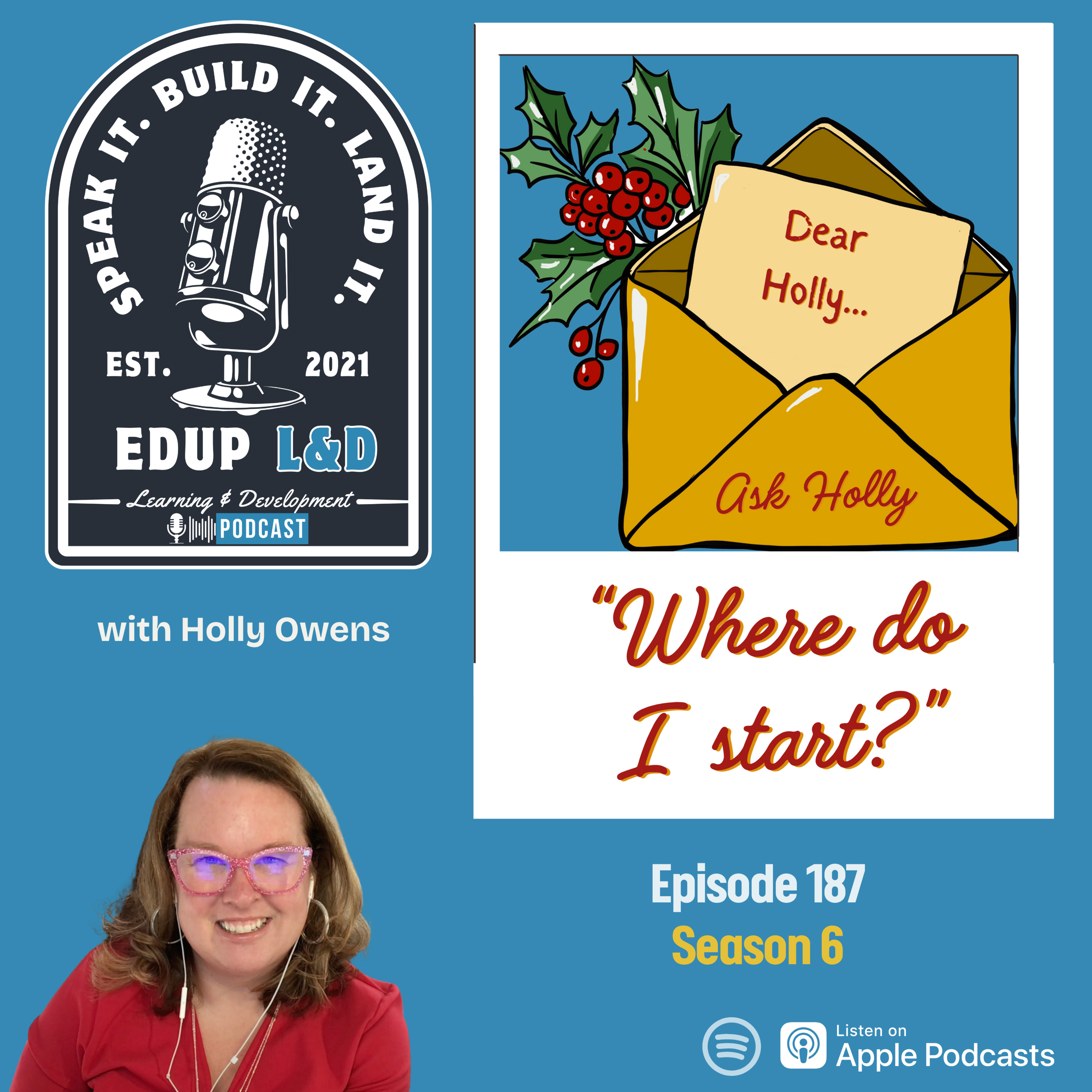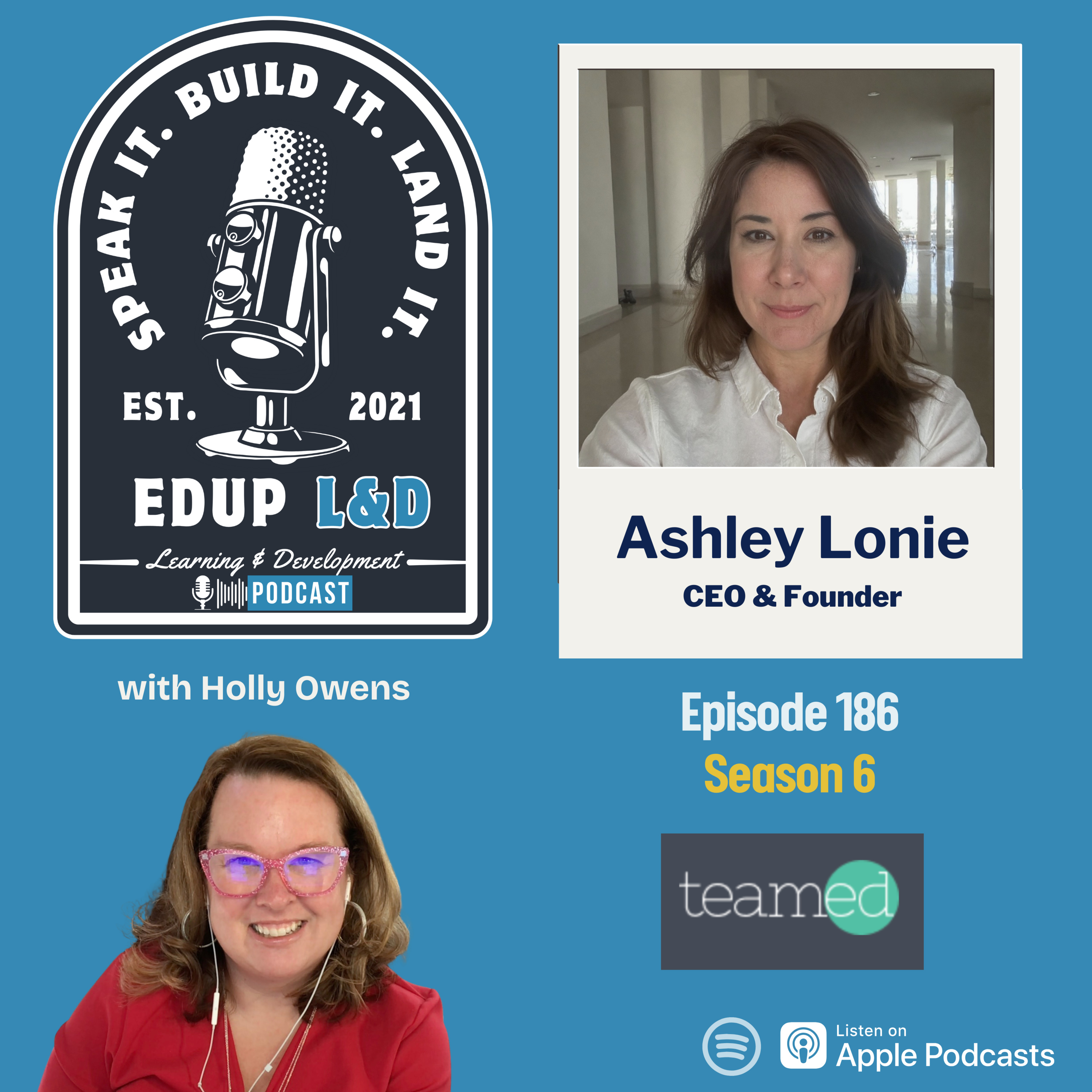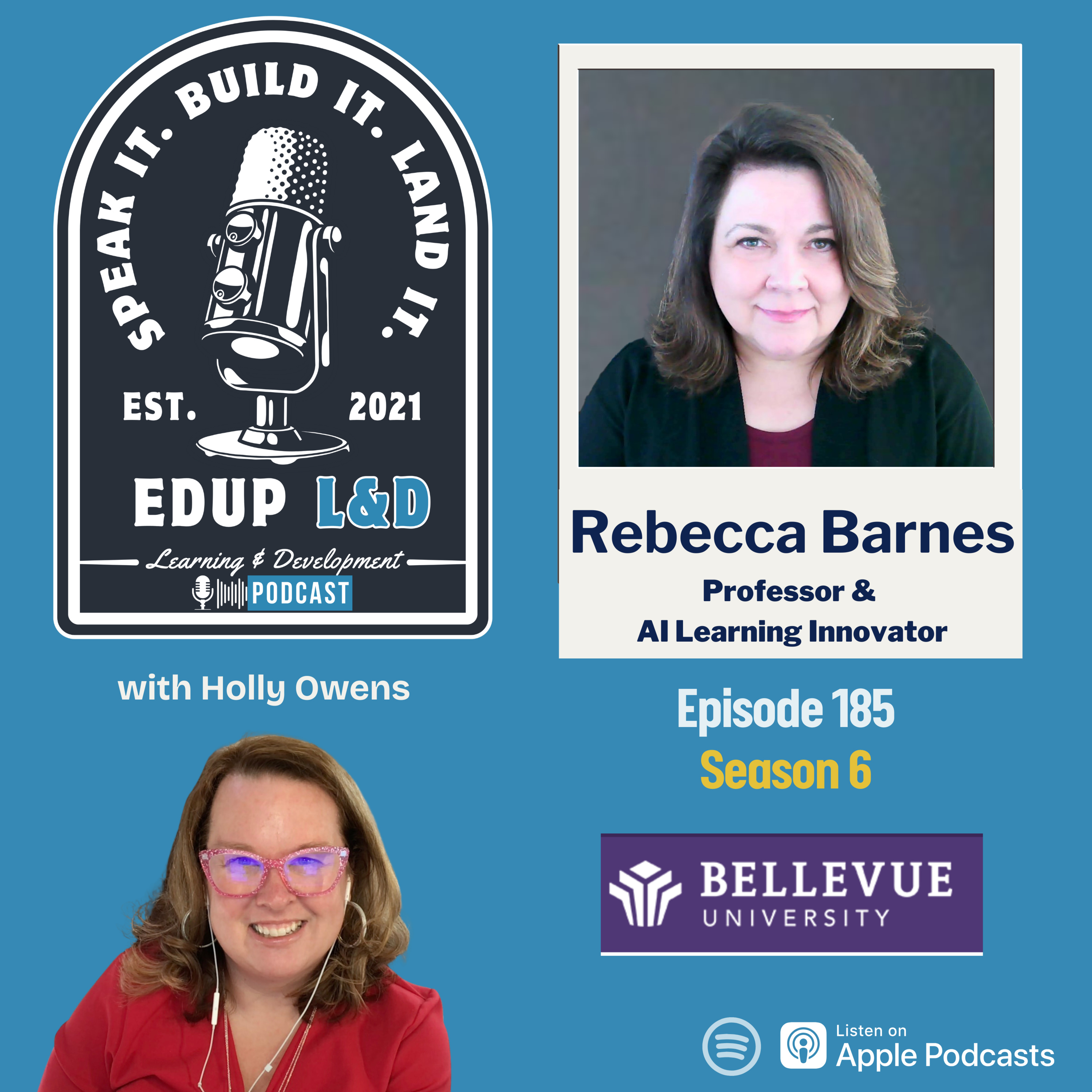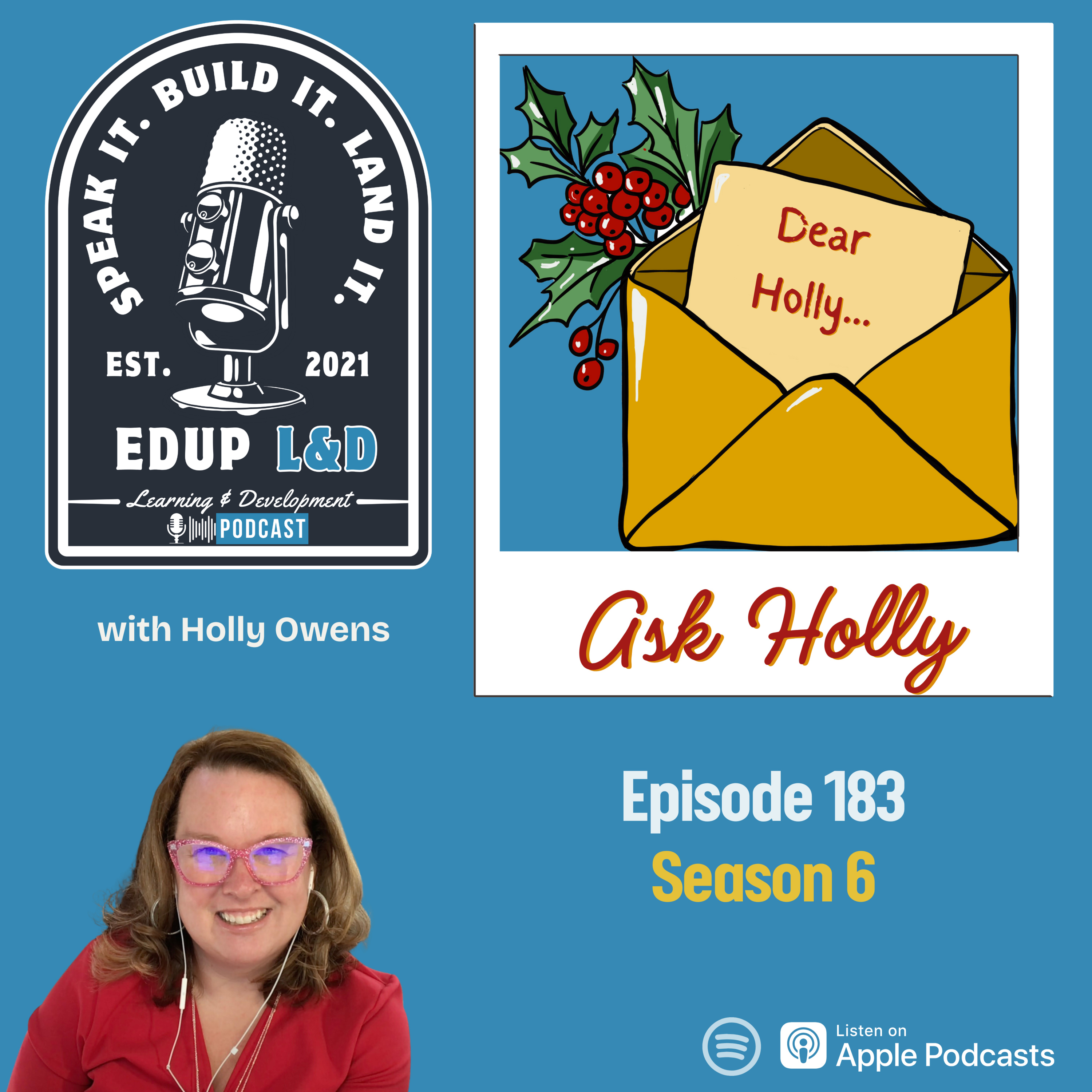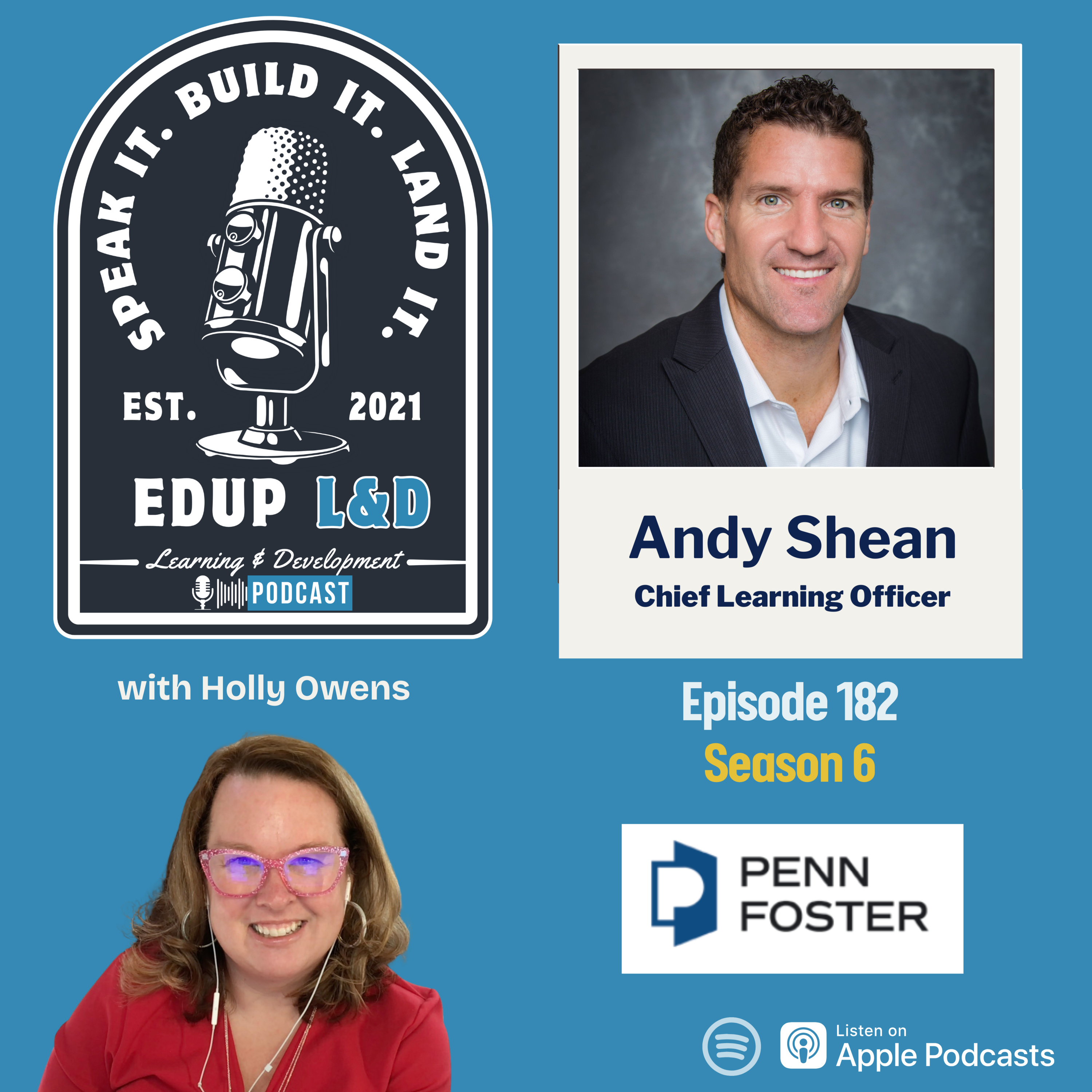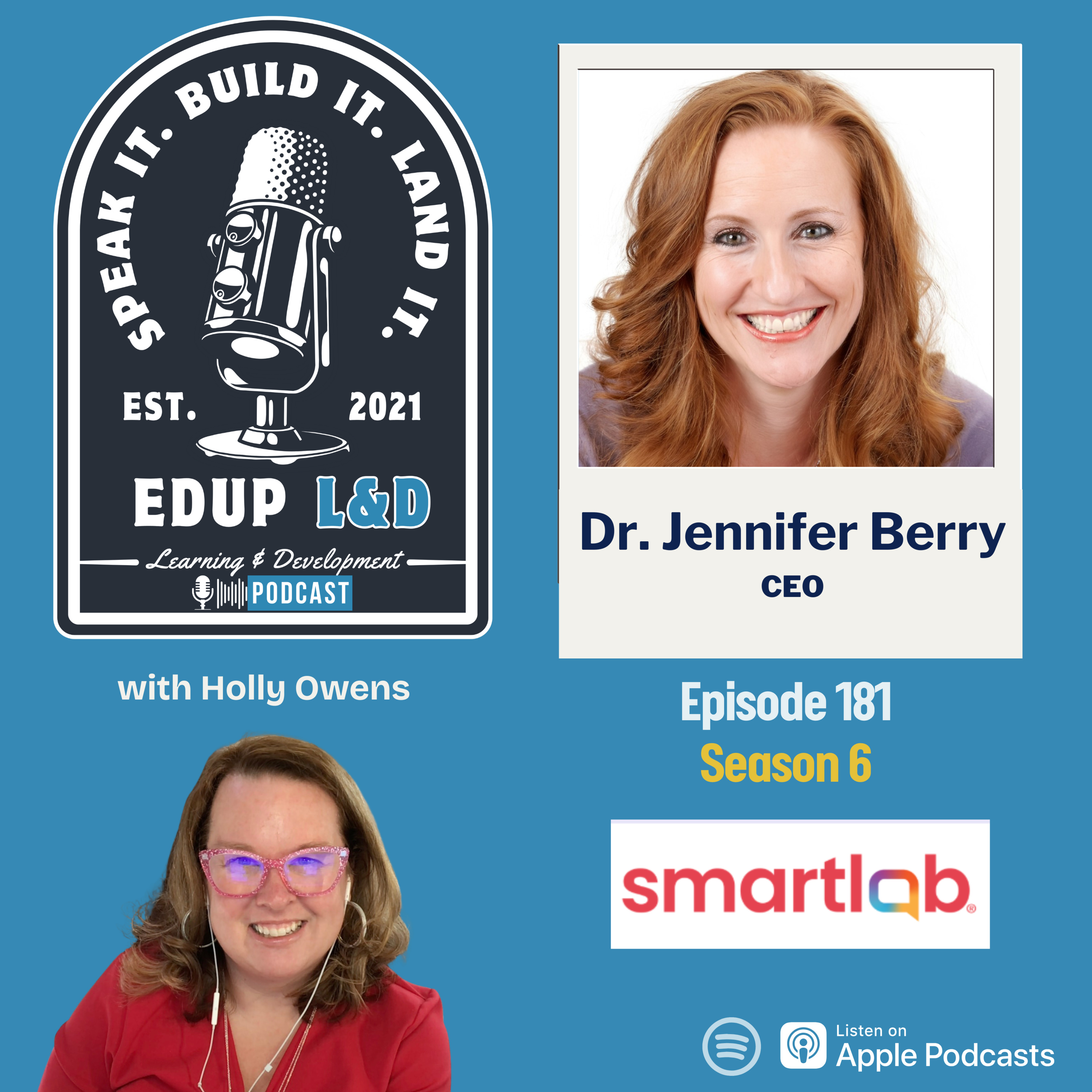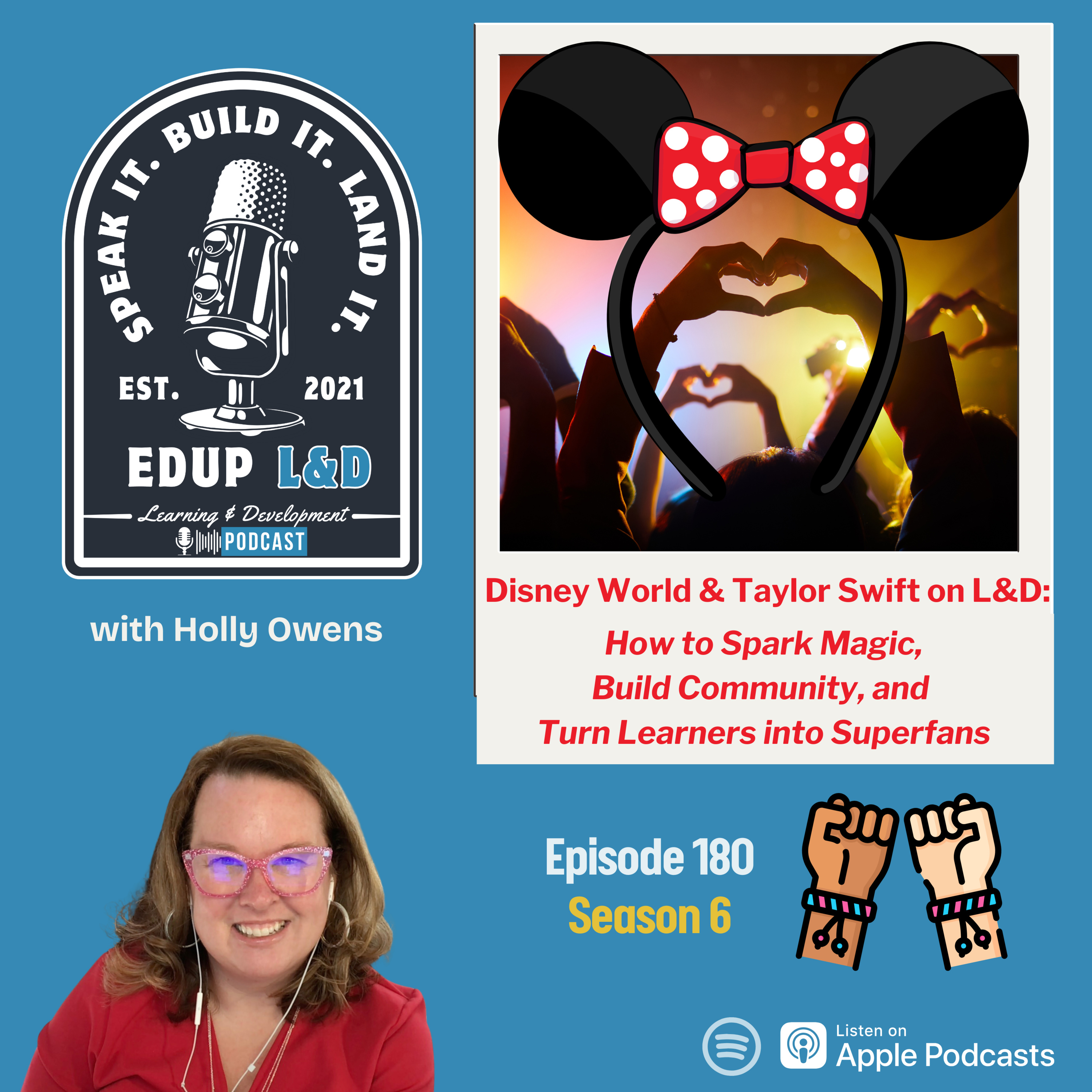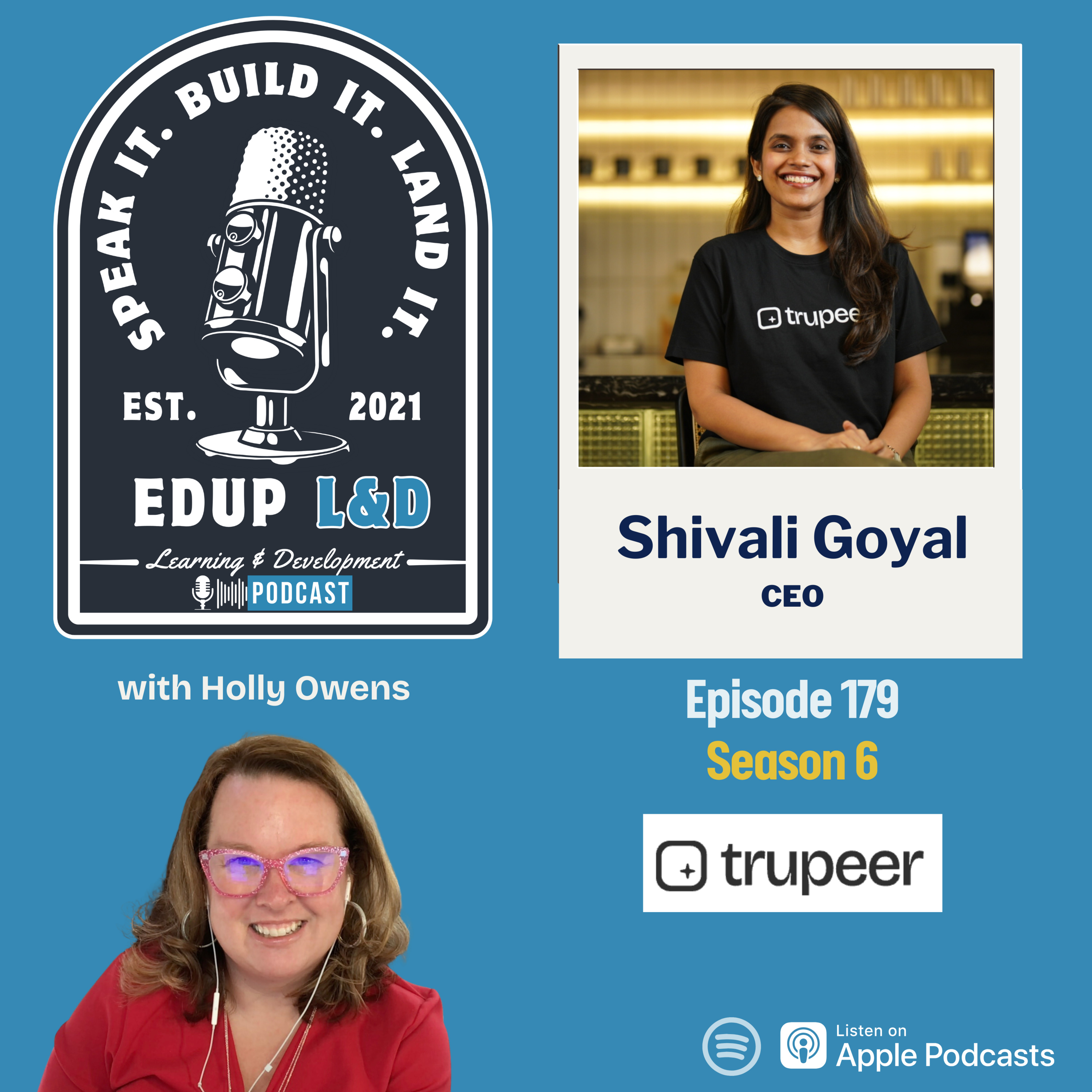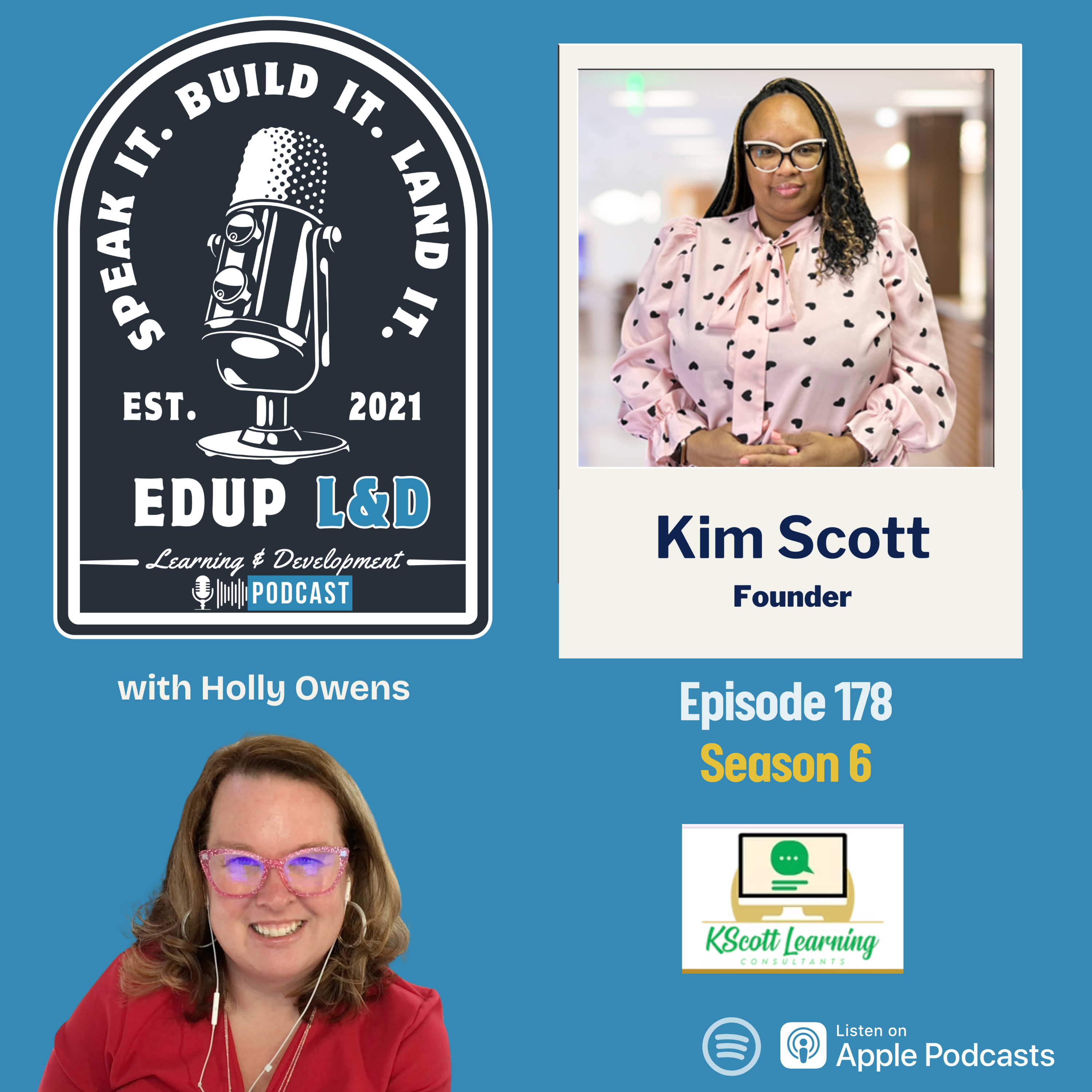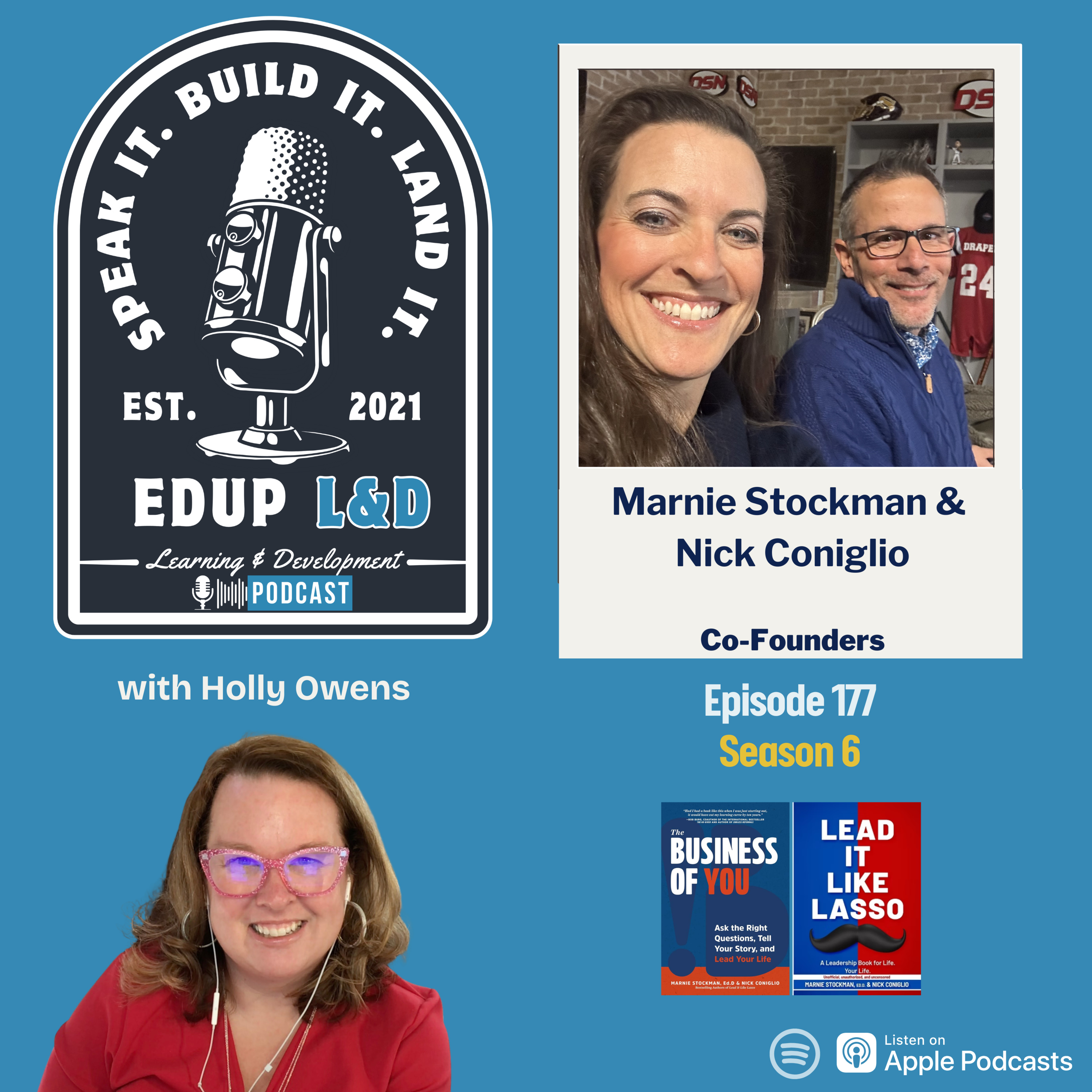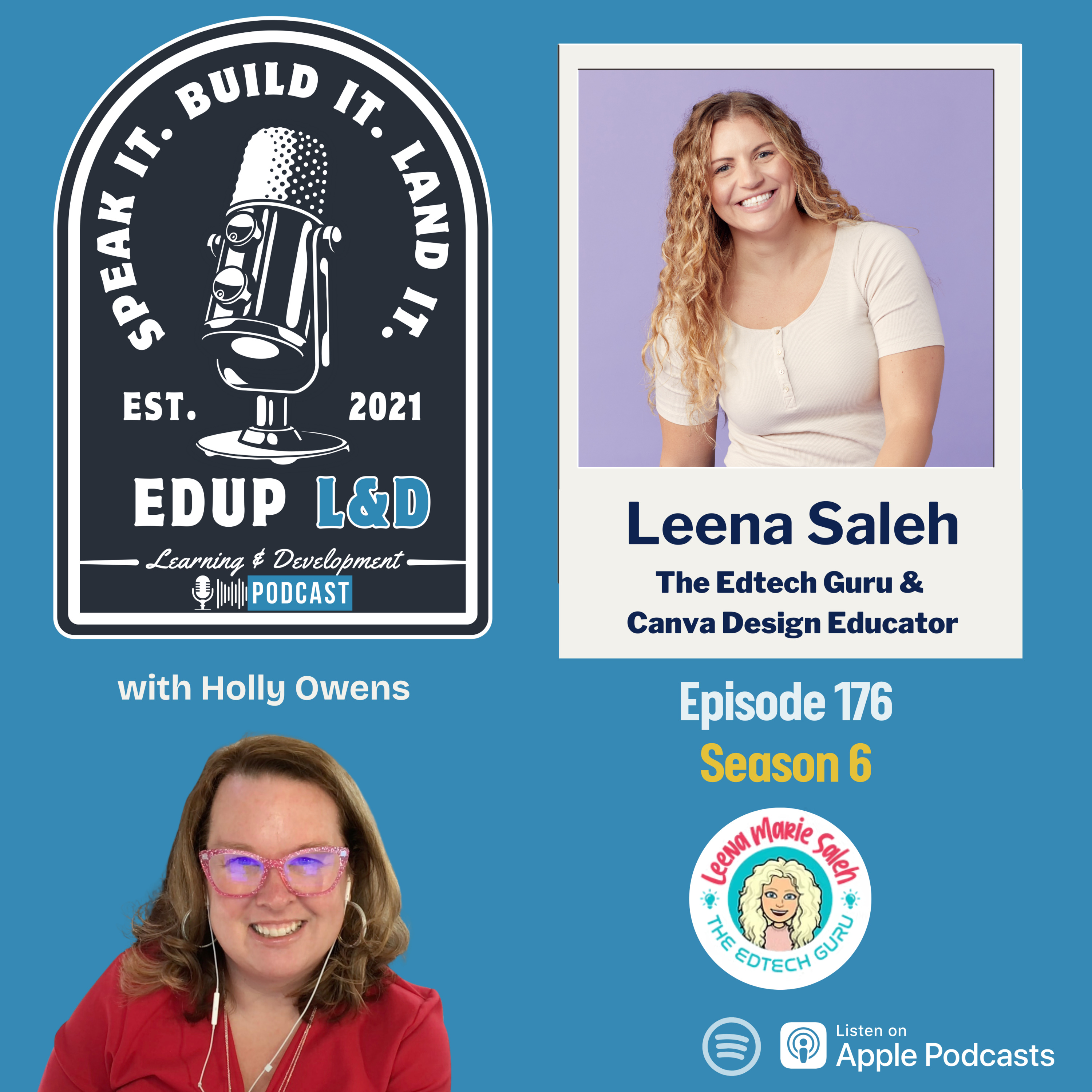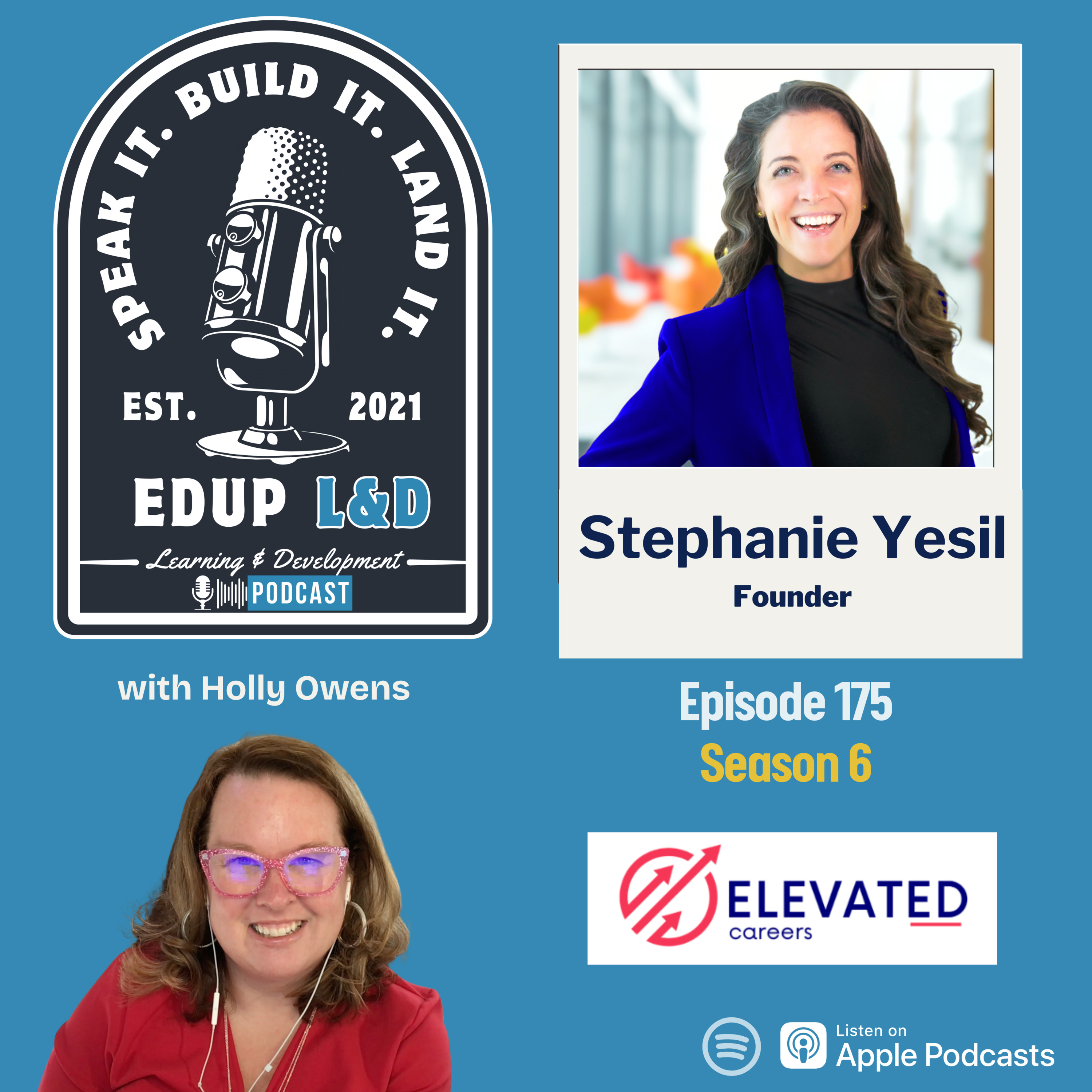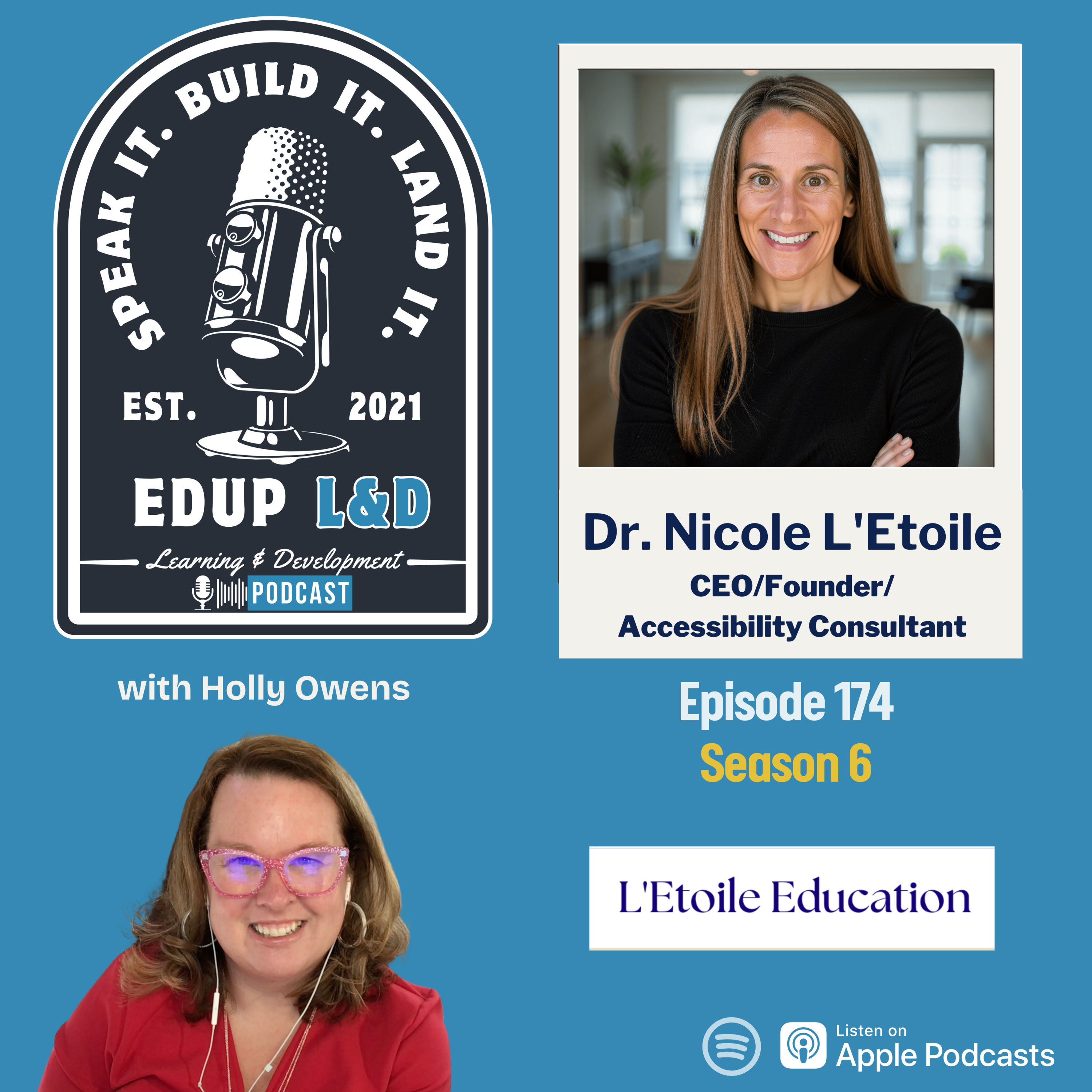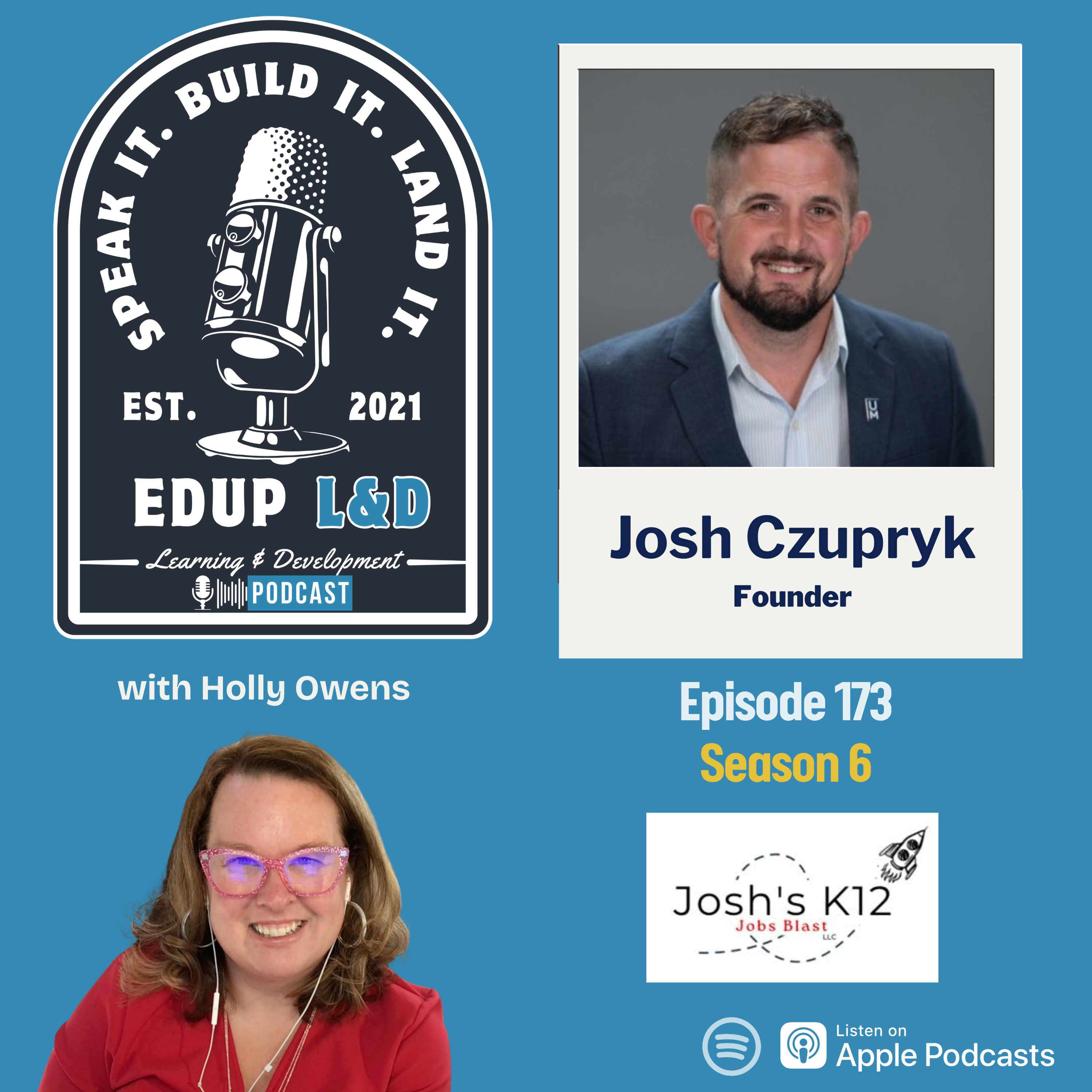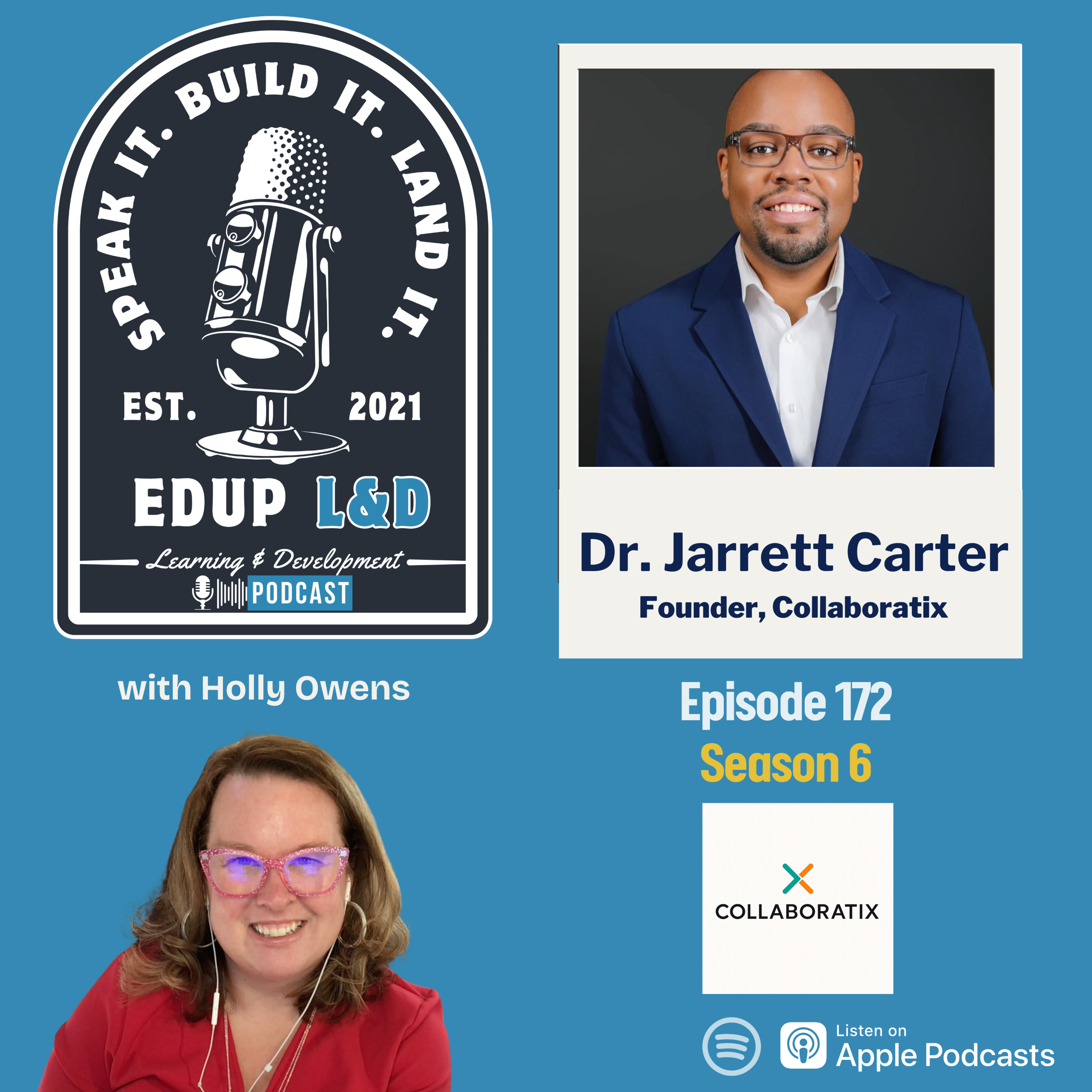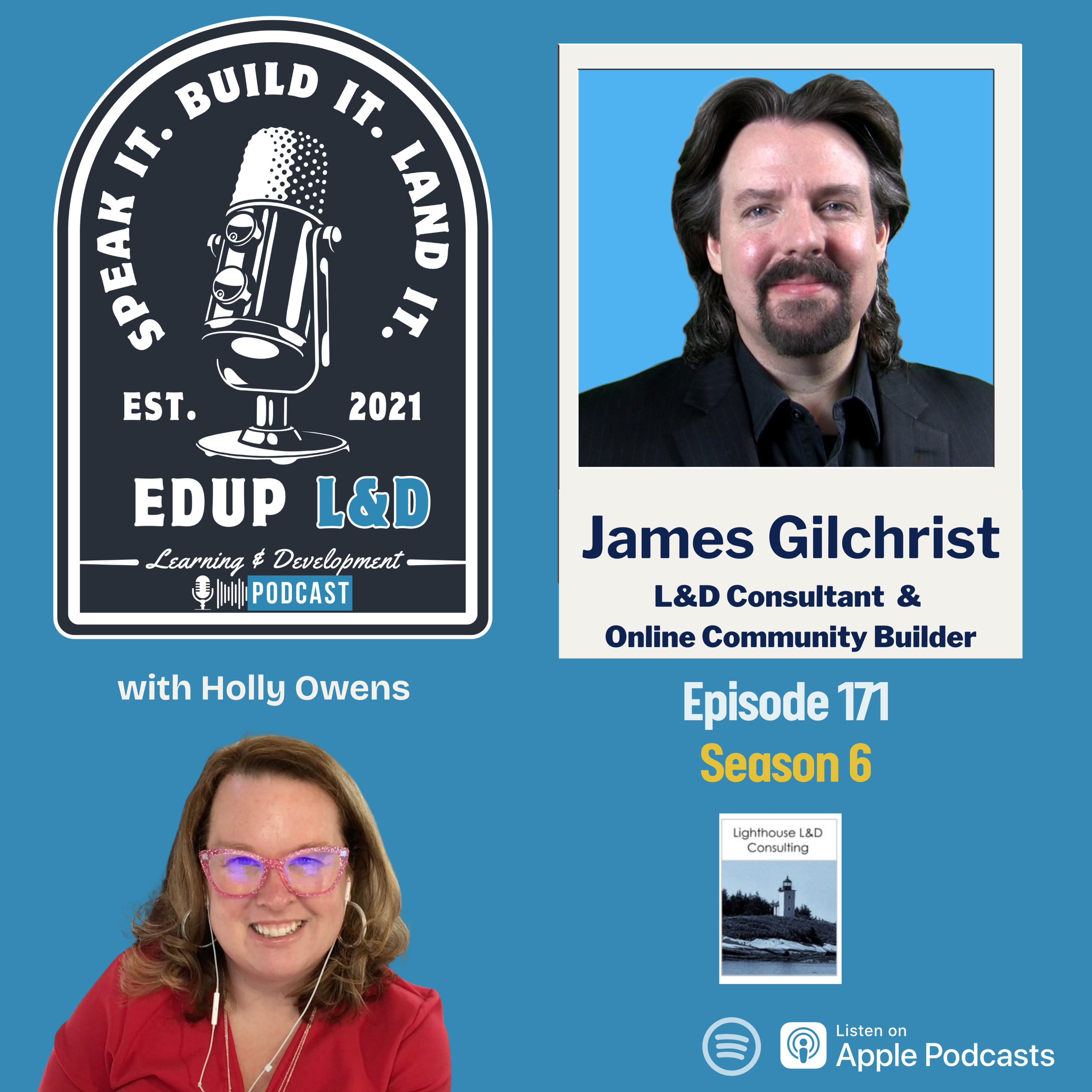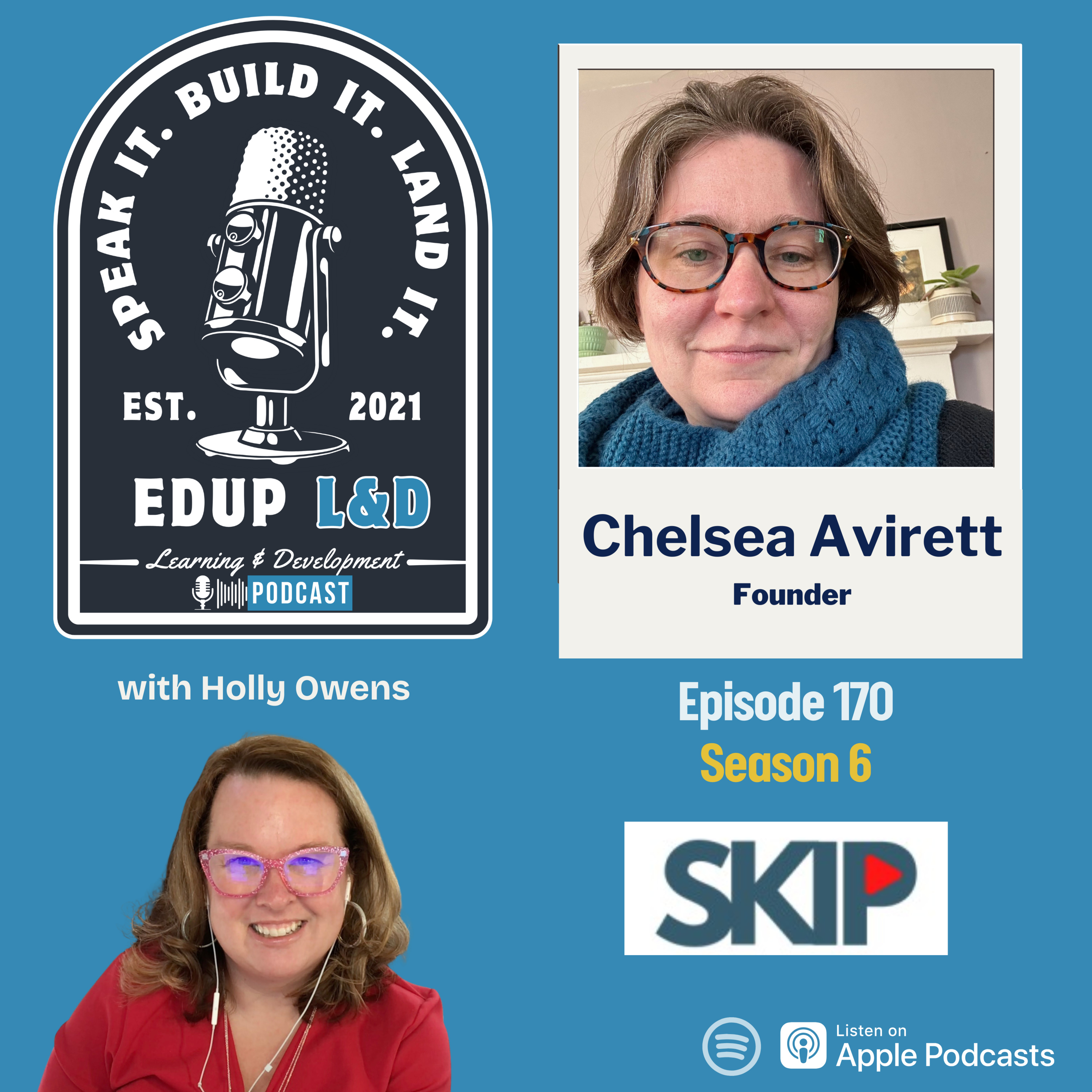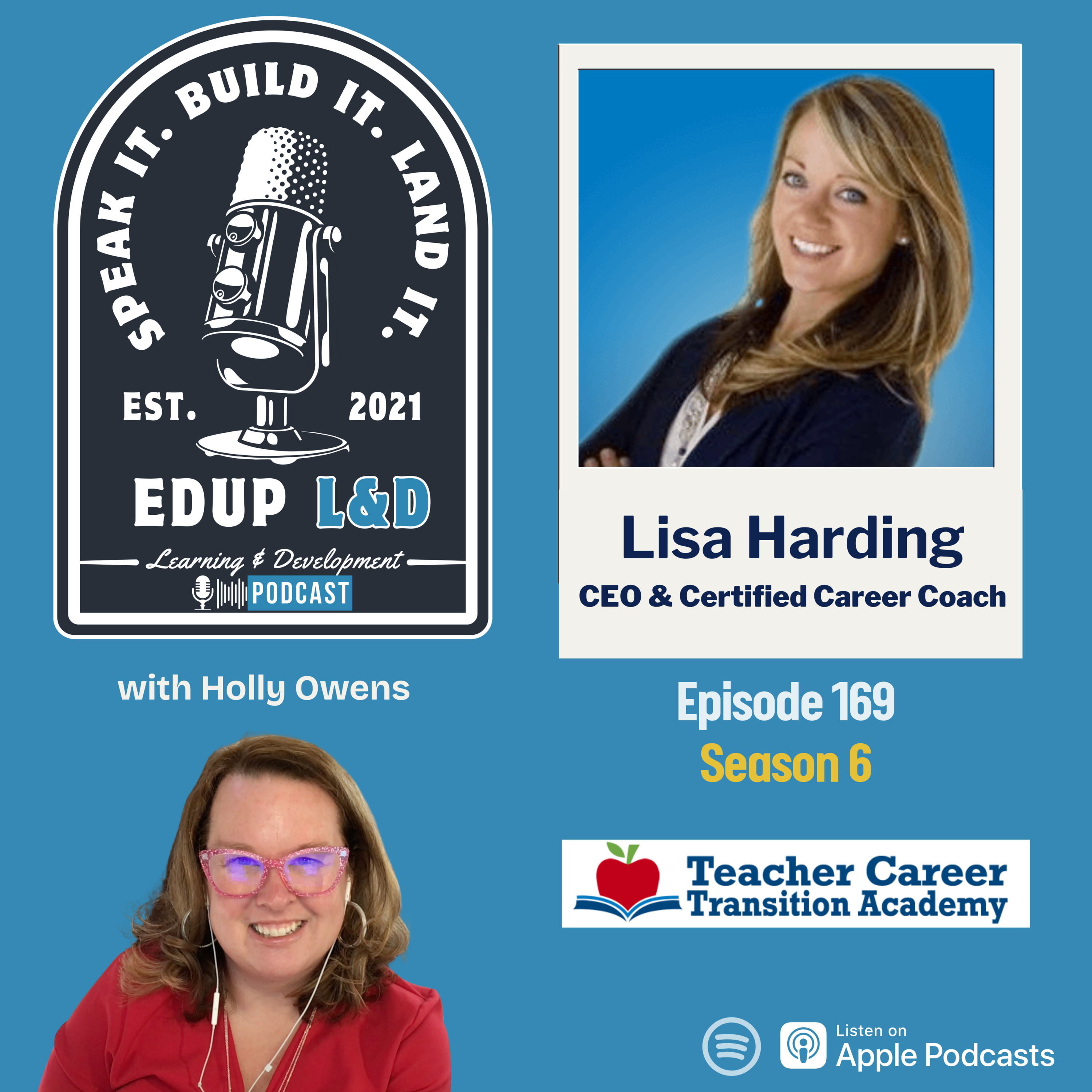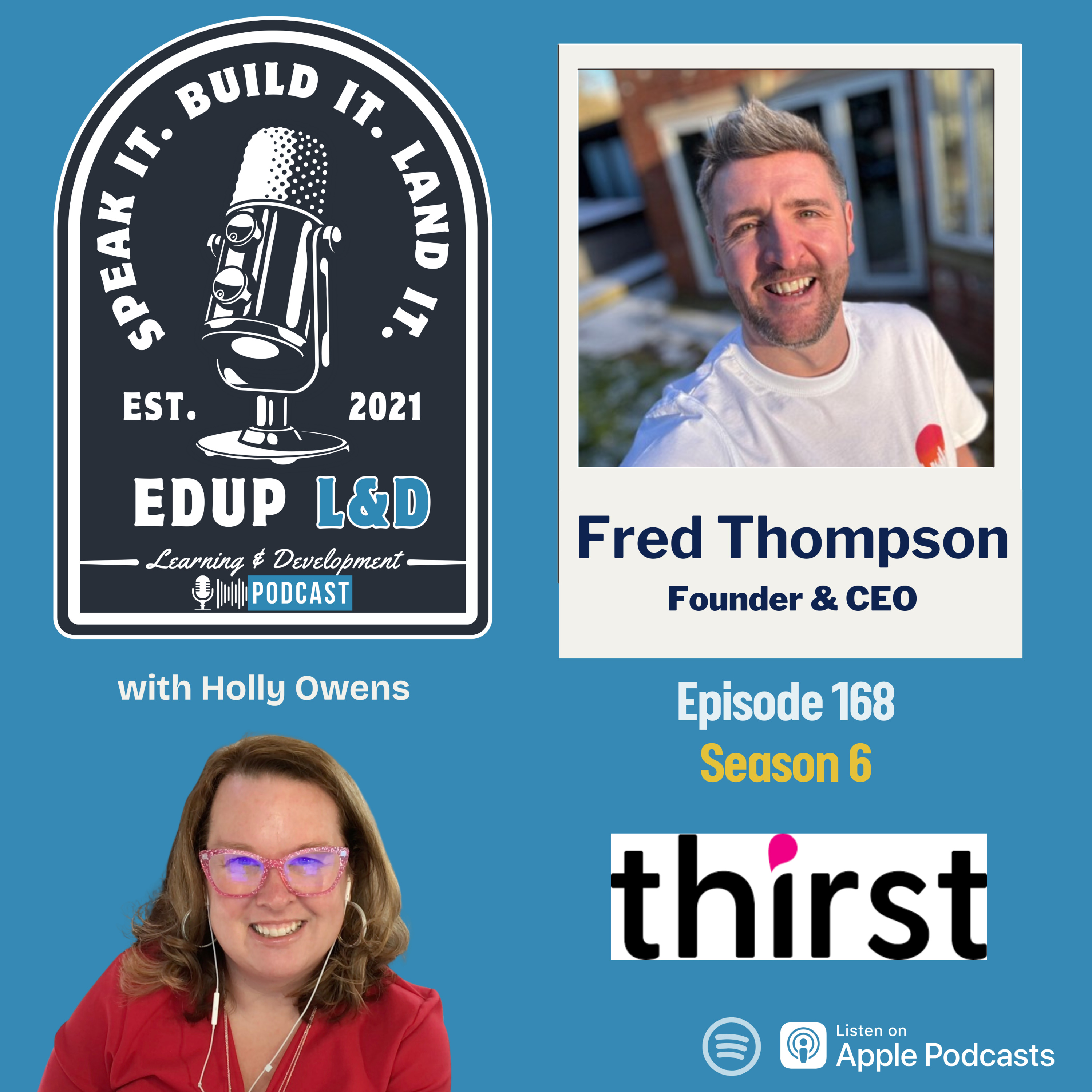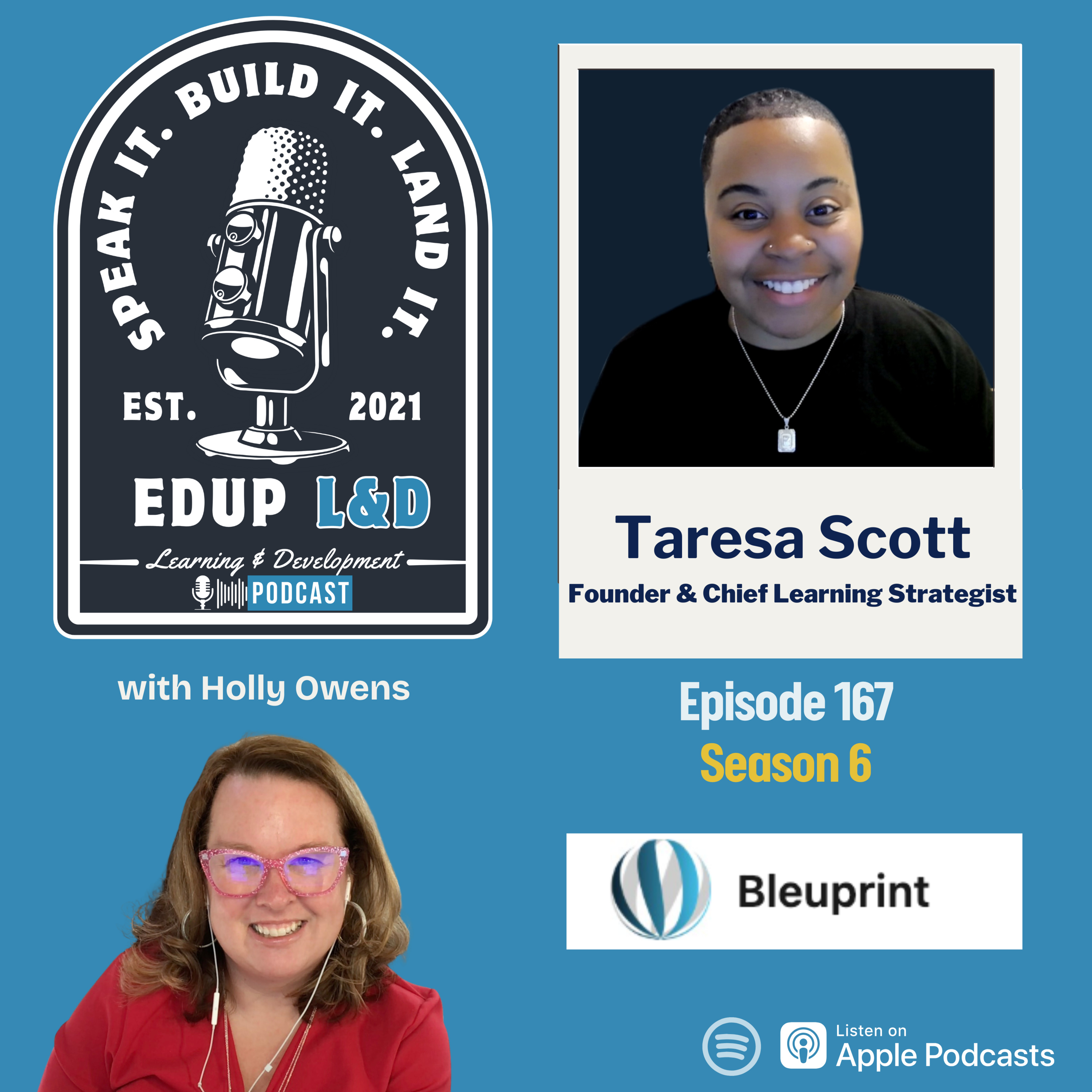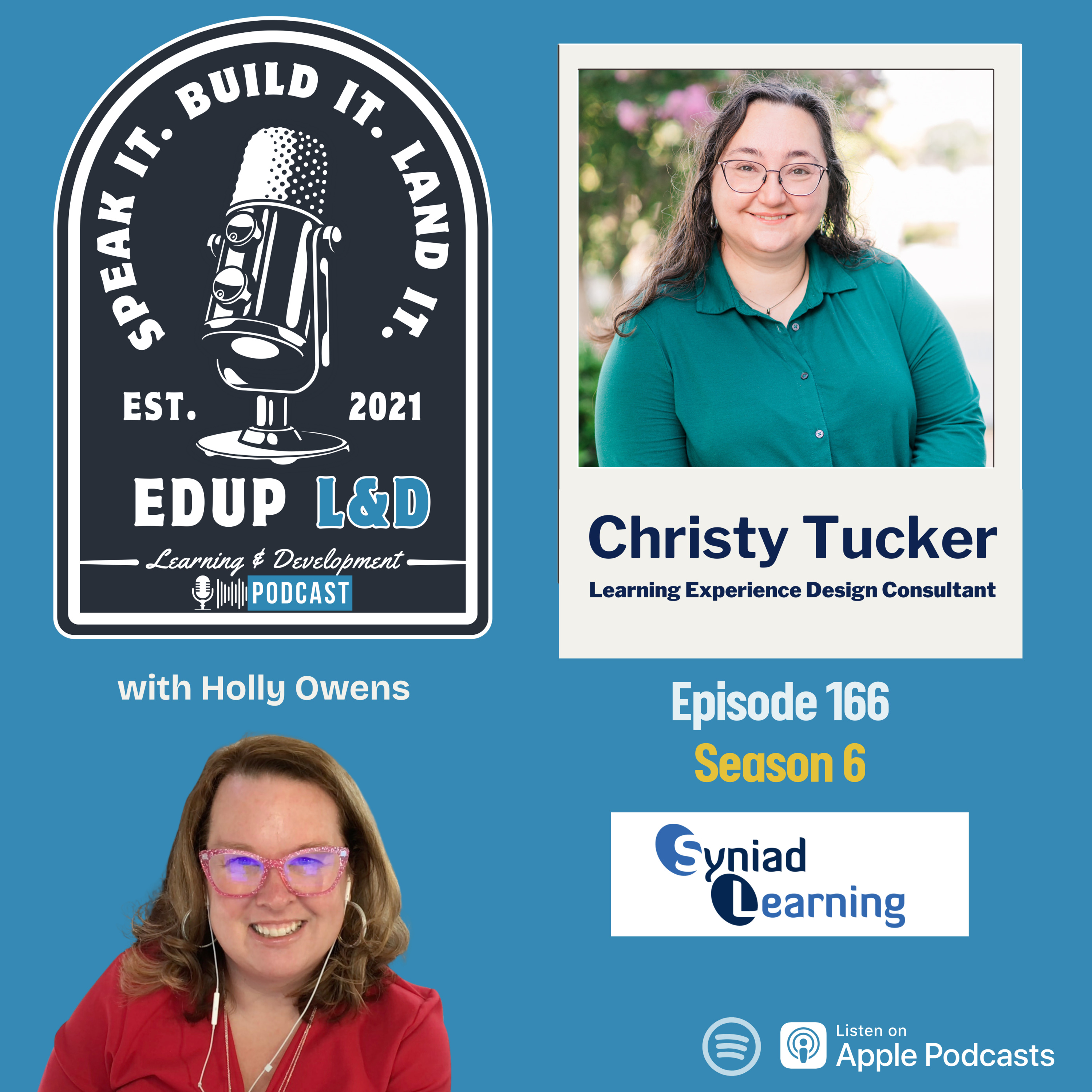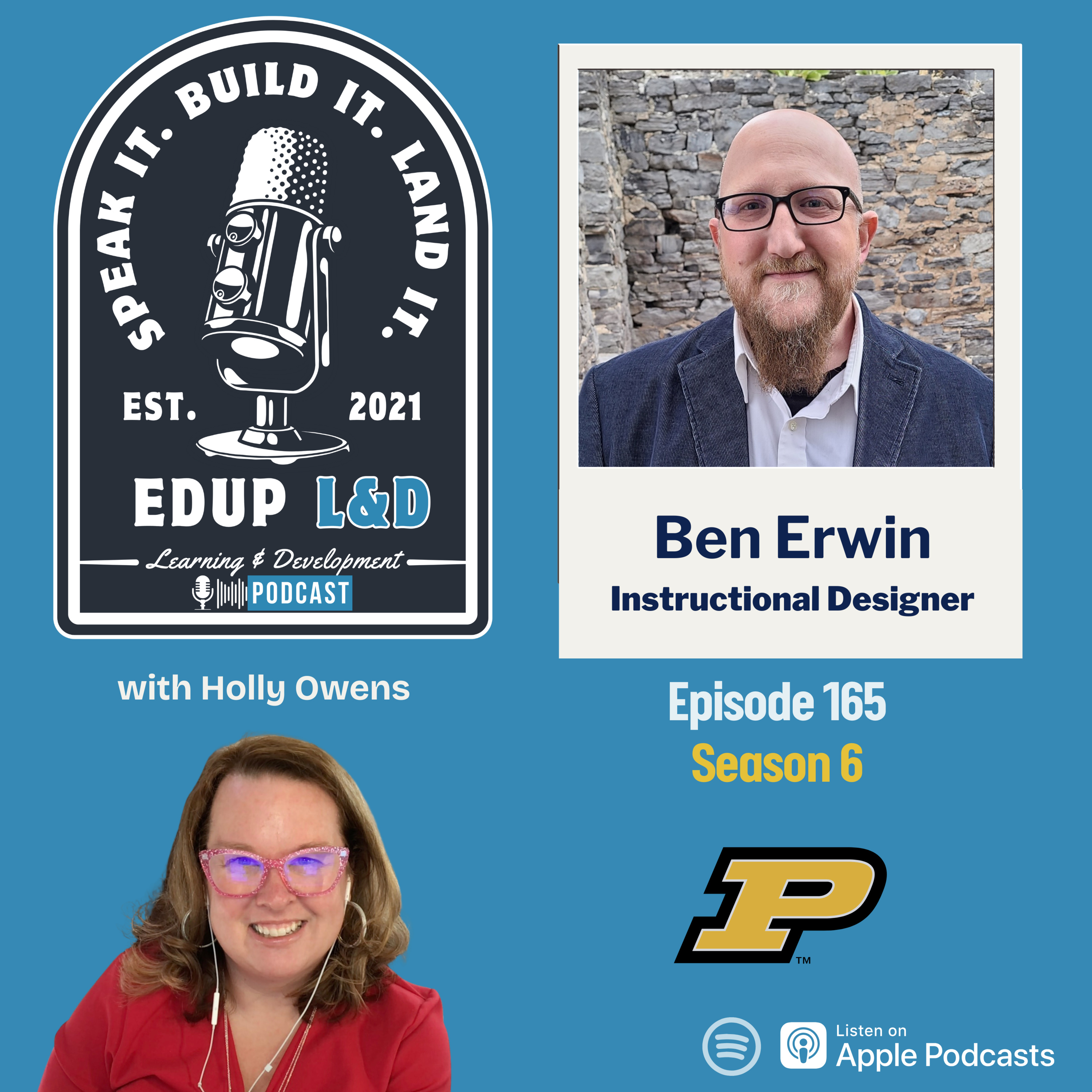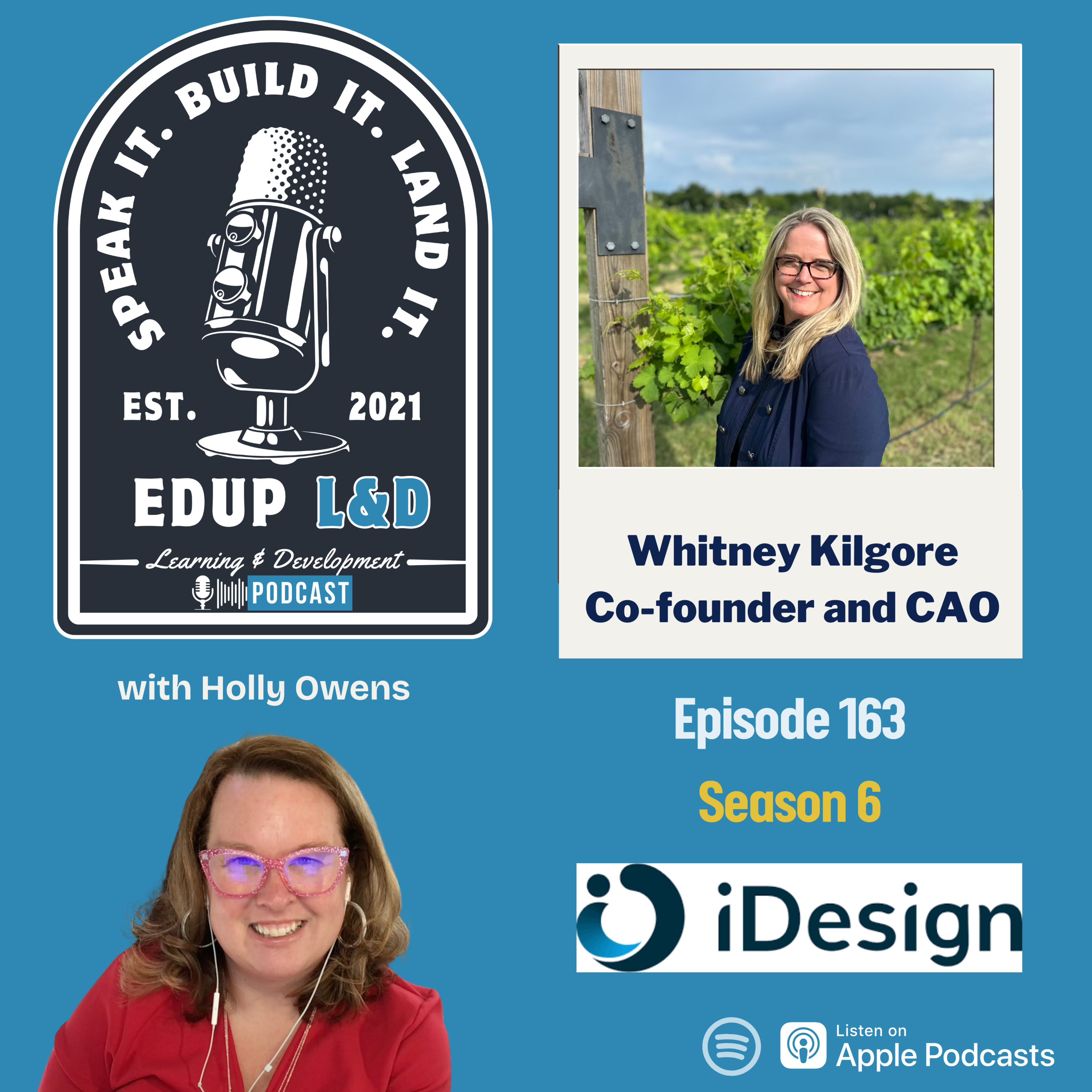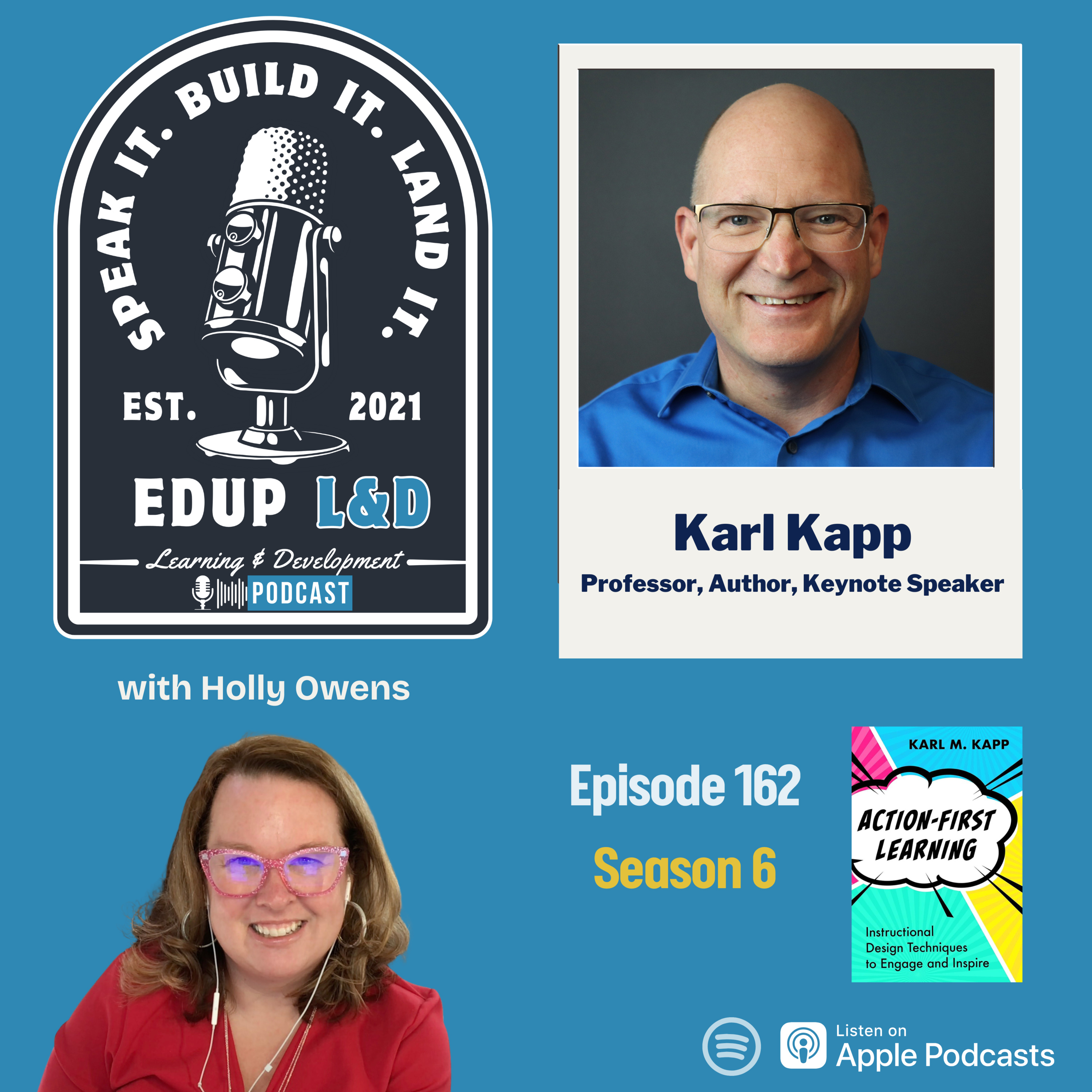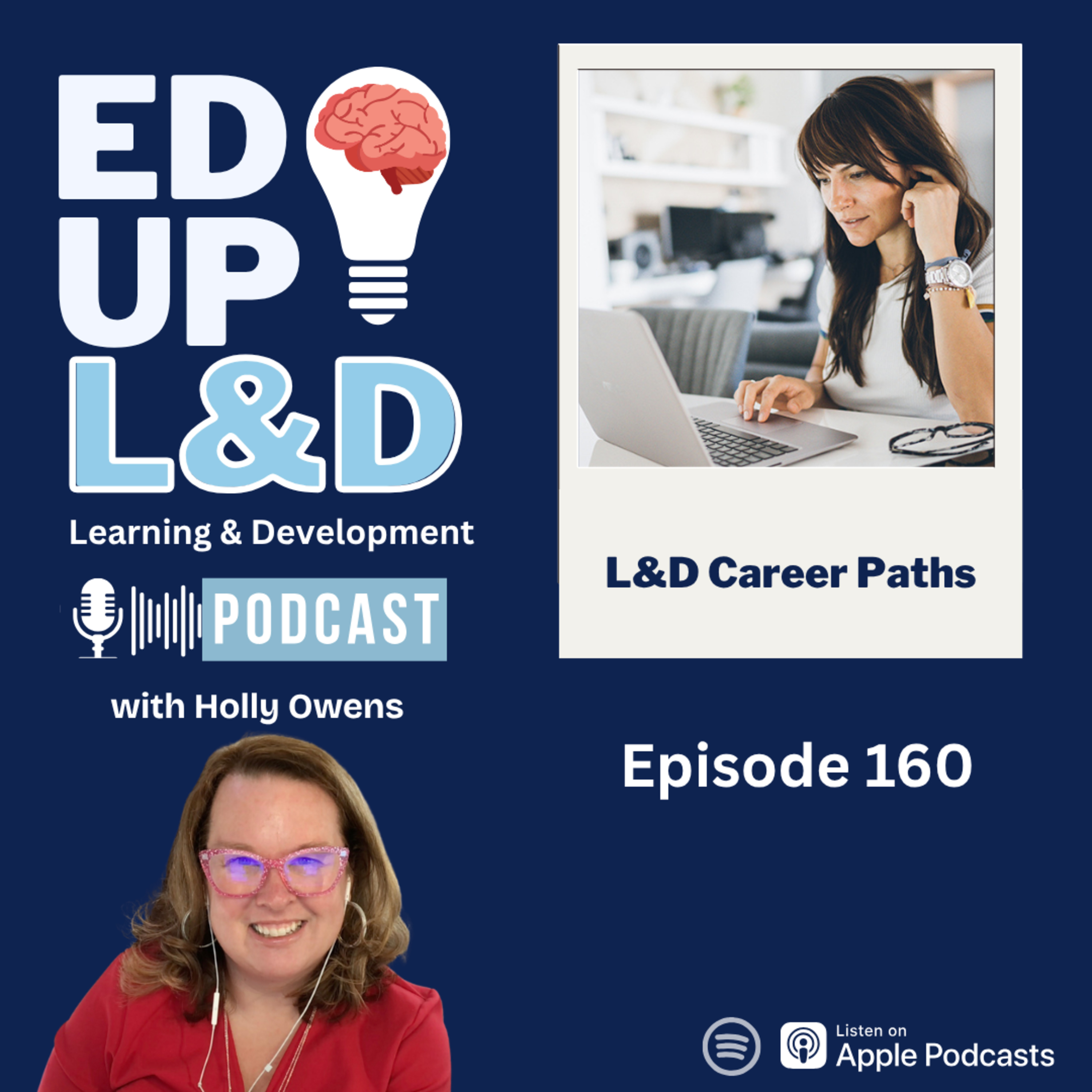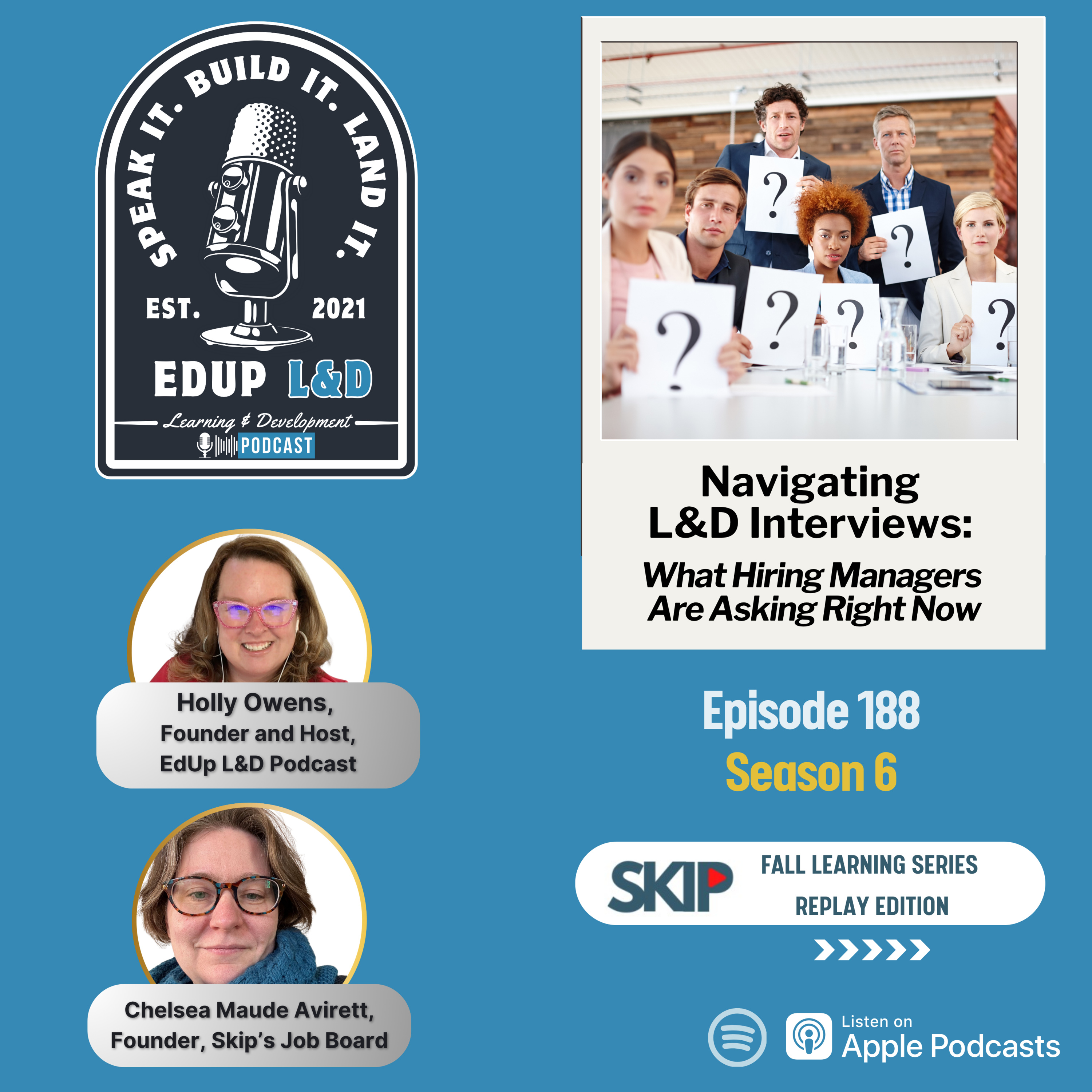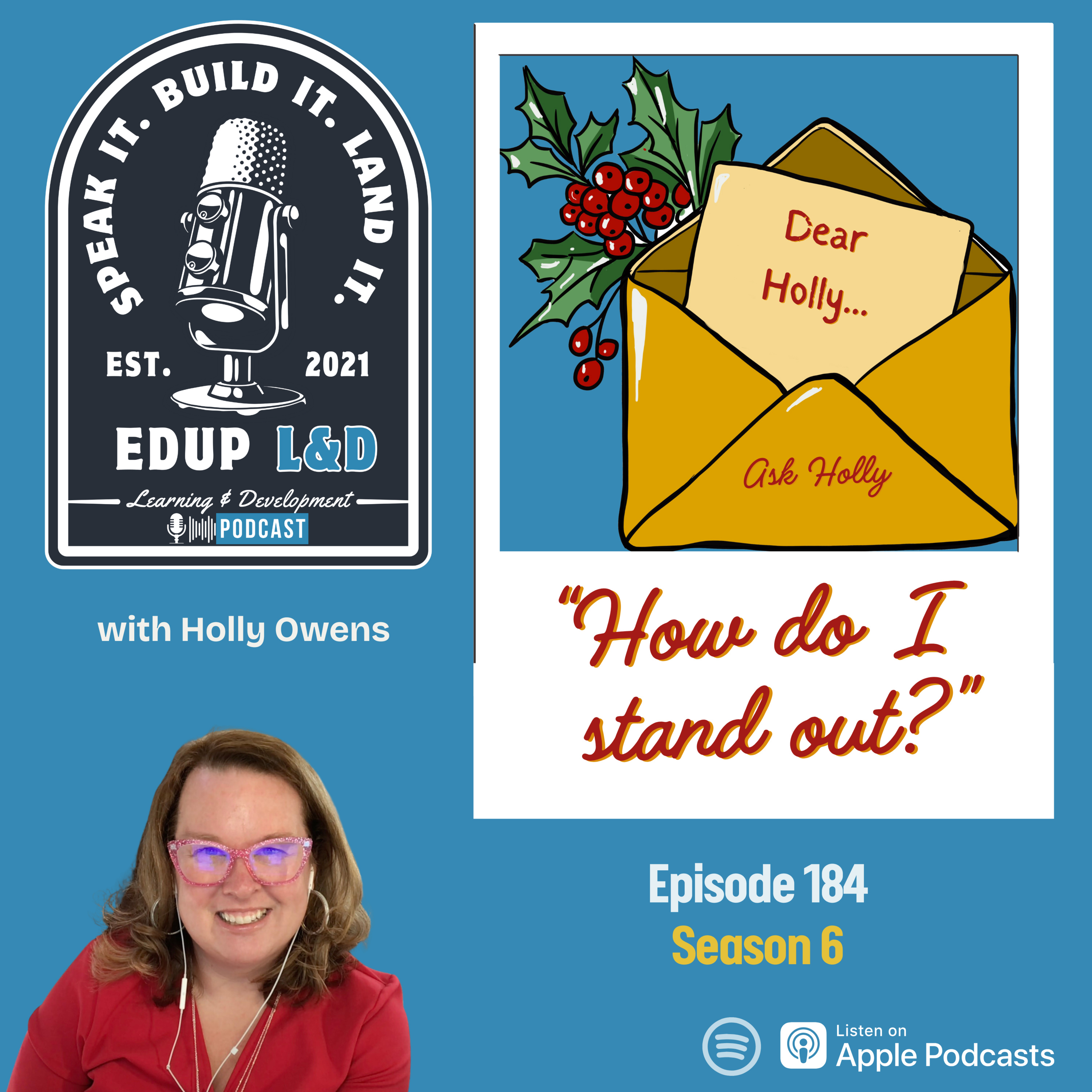
In this episode of Ask Holly, host Holly Owens dives deep into the essential strategies for standing out in the Learning and Development (L&D) field. She discusses the importance of crafting a compelling portfolio and resume, emphasizing storytelling and impact over mere tasks. Holly also shares insights on how to excel in interviews by showcasing authenticity and personal narratives. The episode concludes with a recap of key points and a bonus tip for leveraging video recommendations to enhance job applications.
In this episode of Ask Holly, host Holly Owens dives deep into the essential strategies for standing out in the Learning and Development (L&D) field. She discusses the importance of crafting a compelling portfolio and resume, emphasizing storytelling and impact over mere tasks. Holly also shares insights on how to excel in interviews by showcasing authenticity and personal narratives. The episode concludes with a recap of key points and a bonus tip for leveraging video recommendations to enhance job applications.
Ask Holly
Connect with Holly + Access Her Resources:
- Holly's Coaching Services
- Holly's "Interview Pocket Guide"
- Holly's "Unlock Your L&D Career: The Ultimate Resource Guide"
- Holly on Linkedin
Grab your official EdUp L&D merch here:
___________________________________
Episode Sponsor: iSpring Solutions
🎙️ Huge thanks to our friends at iSpring Solutions for sponsoring this episode of the EdUp L&D podcast! 🙌
If you haven’t already, be sure to check out the iSpring Learning Exchange Community — a vibrant space for creators, educators, and L&D pros to connect and grow.
Grateful for the support and excited to see what our community creates 💡
Thanks for tuning in! 🎧
Holly Owens (00:01.644)
Hello everyone and welcome to another amazing episode of EdUp L &D. My name is Holly Owens and I'm your host and today I want to welcome you back to Ask Holly, the no BS corner of EdUp L &D where we dig into the real questions that keep you up at night while scrolling job boards or trying to present your portfolio or put together that resume.
And today, if you remember, the question that has been blowing up my inbox for the past few months is, how do I stand out? Now, in the teaser episode that was released earlier this week, I gave you a taste of what I think you can do to stand out. But in this episode, we're gonna dive a little bit deeper.
we're going to look into breaking down real examples of what standing out actually looks like in your portfolio, your resume, those professional documents, when you land the interviews. I'm gonna talk a little bit about those hidden mistakes that make you blend in without even realizing that you're blending in. You you become a resume in that pile of resumes. We don't want that. And then explore how to build your own unique signature in L &D. So there's something that you can do.
And I even have a bonus tip for you of something that I think will definitely make you stand out when you are submitting job applications. So if you've ever stared at a rejection email on thought, which I have recently, what the heck do I do to get noticed? This episode is for you. I'm really excited to share some of these tips with you. I hope you find them useful.
If you have burning questions that you would like me to answer in a podcast episode, you can submit through our website. Go to eduplnn, N as in Nancy, d.com and click that Ask Holly button. Or you can submit a question by commenting on one of my posts. And if we pick your question, you're going to get some fresh L and D swag. So be sure to submit those questions. I'm going to be doing more and more of these segments.
Holly Owens (02:24.458)
and I look forward to answering your question on the air. All right, so let's start with portfolios. Another question that I get a lot, know, because a portfolio, I think, is something that is more dynamic than a resume, it's really this big opportunity that people might miss. So when you're thinking about developing your portfolio, and I just had a conversation yesterday with
Ashley Lani have teemed about portfolios saying that one of the things I want to caution you against is trying to make everything perfect. Perfectionism, perfection is a state of mind. It doesn't exist. It's a facade, all those different things. So when you're building your portfolio, standing out doesn't mean you're adding more slides or you're adding more projects or you're adding more everything. Insert said artifact here. Your portfolio
is telling a story. It's strategic storytelling, you're focused, you're going through the projects or the artifacts you've made in the past that you're proud of that are not proprietary that you want to share that most exemplify your skills, that most exemplify the things that you're passionate about, that most exemplify the things that you want to showcase and you want to show people that you're very proud of.
So I have a couple examples here of different types of portfolio quote unquote people for example. So the first one, the example is the, I call it the copypaster. So people, and I've done this too, everything that I'm talking about I have done in the past. I've seen portfolios that are just copy pasted, put onto a page, you're just rushing to get it done. It becomes a lot of screenshots. It becomes a lot of things with no meeting.
So it really doesn't stand out. It's just you're kind of just getting it done And you have zero context for why these things are there. Why are they important? What do they showcase? So when you think about it, I want you to ask yourself four questions if you're doing this When you tell your story through your portfolio number one, what's the problem? What was the problem you were trying to solve by creating this artifact or creating this?
Holly Owens (04:51.838)
e-learning or this infographic or this job A, what was the problem? Number two, who were your learners? What was the audience you were tailoring this learning to or this document to? How did you solve it? So how did you solve the problem by creating this? Like why did this solve the problem? And that goes along with the fourth question is what was the impact? And that's the data and analytics you get from.
What was the impact of this if there was like decreased time to proficiency or less mistakes happening out in the real world setting where, you know, customer care agents are not making as many mistakes when they're talking to customers. So those four questions you should be asking yourself is what was the problem? Who were the learners? How did you solve it? And what was the impact as you're telling this story for your
before your portfolio. That's memorable and that's what hiring managers share with their team. So that's what they want to see. want to, you want to show the impact. And that again is communicating your value in the portfolio piece. All right, so the next example is the signature piece of the portfolio. Someone I coached, you know, they had a three solid projects, artifacts.
but one of their pieces was magical. You know I love Disney, it was magical. It showed her process from like doing it messy, like Robin Sartre talks about in her book, sticking notes to like a polished module. So we made this like the hero piece, like the focal point of the portfolio. And having this piece in her portfolio got her interviews.
and people still ask her about it and how she did this. And again, what is your signature piece of your portfolio? What's the thing? I would put it as the first thing in your portfolio to show that that is the main focal point of your storytelling. Another pro tip here, and I've already mentioned this, but don't wait until you're perfect.
Holly Owens (07:15.146)
A portfolio that feels authentic and learner-centered beats a textbook polish but soulless one every time. If it feels inauthentic, it's not reflecting again who you are. You're not doing the storytelling. So when you're thinking about your portfolio, please make sure that you put in things that are authentic, that are important to you, that show your passions while also showing your skills. I always say to make the portfolio piece multimodal.
And what I mean by that is you have documentation, you may have presentations, you may have videos, you may have audio, you may have some e-learnings that you're giving a preview of, you may have some things that you created a whole project management process and talk about why you did that, maybe it was to solve a problem within your institution or organization. But just remember, this piece is the dynamic piece of your professional resources. And this is something that most
I'm going to say, you know, and I've been applying to some contract jobs and some other jobs lately, they asked for the portfolio. They asked, you have a website? Do you have a portfolio that you can share with us of artifacts of things that you've done? So this is definitely a piece that's needed and will help you stand out and do those things that I talked about to help you stand out. All right. Let's talk about it. Let's talk about the resumes because resumes get a bad rap and you know,
I really feel like, and I've said this numerous times, that resumes are a static document. They're very boring. I'm really sorry for people who love resumes. And most of them, they look the same. There's black text, there's bullet points, there's buzzwords all over them. It's just something that we're trying to beat those ATS systems. We're trying to, again, stand out.
And you know what? Some of it doesn't work. It gets spit back out or human reviews it and they're like, I don't even know what this person is about. So standing on the resume means that you are shifting your responsibilities, like your, what you do in your job description to what impact, again, here comes impact into the situation, what impact you had.
Holly Owens (09:42.751)
in the position? Like what are some of the things that you took on that you owned that made things better? So for example instead of saying I designed online courses for 200 students you can say something like redesigned onboarding modules that reduce training time by 30 % and improve completion rates by 45%. Which one do you think sounds better? Numbers, results,
human impact, that's what makes you stand out.
You know, it's really difficult to find the just one thing, but I think if you reward some of your stuff and you focus on this impact, it's really going to change the dynamic of your resume.
So numbers, like I said, the results, share that information. Here's the hidden mistake though. Over stuffing your resume, like a stocking. If your resume looks like an instruction manual, or it's getting skimmed, it's not getting read, white space is your friend. Strategic bolding, which I do in my resume, like I bold those percentages.
some of the words. Think of this as instructional design for recruiters. You want to be able to showcase because when your resume is submitted literally people spend like a second or two on the first page. So don't overstuff everything and make sure that it's designed in a way that's accessible.
Holly Owens (11:31.455)
know, white spaces is part of accessibility and that people can read. That people can go through and they can read it and they can understand it. Like I said, the resume is a very static document. So you have to work a little bit harder to make sure that it's formatted in a way. And I'll share my resume in the show notes because mine's not perfect either. But I've been doing some different things to find ways to kind of stand out more. And I've been doing these things like I do the bolding for sure.
So all these things I'm trying as well. All right, so we've talked about the portfolio, we've talked about the resume, and I hope that you've been taking notes and thinking about what you can do right now once this episode is over, or as you're listening to this episode, to improve your portfolio and to improve your resume. And I wanna say that these two...
professional resources are never really finished. These things constantly need updating when you get a new job, when you create something new that you want to share, when you're updating artifacts and information. You're constantly updating these things. So they're never really done. That's why I say it's important not to be a perfectionist because it's going to change. This process is iterative just like instructional design. All right, let's jump into interviews.
I think that interviews are really where you can showcase your personality. You can show who you are beyond doing that video, know, beyond putting things in your portfolio piece. People sometimes play this safe because they think they have to have a certain answer to the question. And one of the things I will say is that yes, the interviewees may be looking
for a certain answer, but what stands out in interviews is specific stories. And I can say for a fact that I use this when I interviewed for my role at Amazon Pharmacy, is I had stories that I would tell of projects that I did and then how it impacts. So don't just say things like, I'm collaborative. What does that mean? Everybody can be collaborative. You know, that's kind of like a given in instructional design.
Holly Owens (13:59.426)
You can say things like, for example, when we launched X program, the SME's and I, we disagreed about delivery. This is a common example. I set up a pilot with the learners. I gathered feedback and brought the data to the table. And then guess what? It shifted the entire project in a better direction. Wow, that's a whole story of what you did and that.
It's showing impact. It's showing you took ownership of what was happening and you tried to fix the problem and then the project shifted and it became successful. That's memorable to people when they're interviewing you. That's building a narrative that only you as the interviewee can tell. So one of the things I recommend is writing down some stories, writing down some examples I've worked with.
very difficult faculty in the past and I always share stories about that. I've worked for some difficult SMEs, but I've also had some successes which I also, I have a list that I keep of situations and I keep updating this list and it's just like keywords that remind me of the story. One of the mistakes most people don't realize is when you're giving those generic answers when you sound like you've
memorized the interview questions or you know the interview questions and you're not being authentic, you kind of fade into this blur of every other candidate. You are not memorable, you're forgettable. I'm not trying to be harsh here. Trying to make sure that you are getting things that you can do to stand out. So I think it's important that you're super authentic in your interviews. You're answering the questions.
but you're also telling the story of who you are at the same time. And just remember, one of the tips I share with some of my clients are the people I've worked with in the past is that we feel a lot of pressure when we're interviewing. We feel like the company or the institution, they hold the key to unlock a salary for us, health insurance, all the different things, like they have the power, but that's not true. That's not entirely true.
Holly Owens (16:24.115)
You are interviewing that company just as much as they're interviewing you. You don't want to end up in a place where you don't feel like you belong or you don't feel like you can grow or you're in a toxic culture. You will learn a lot about the company through the interview process. So make sure that you remember as you're stepping into these interviews that
you are interviewing them just as much as they are interviewing you.
Alright, so what's your signature in the interview? When you're thinking back on your career, know, what are some of the things that there's common themes throughout? You know, what did you do? What have you done? You know, one of the things I love about prepping for interviews is it's a time to reflect for me back to what I used to, what I did, because sometimes we don't feel like
progress is happening and it's actually happening. Probably not happening as quick as we wanted to but it's happening. So what is the through line of my career is one of the questions you can ask. Is it accessibility? Was it making learning fun? Was it building something at scale? Was it improving a process or improving processes? you more ops focused? This signature theme should be woven into your answers.
So that when the interviewer walks away, they're thinking, yep, that's a person who owns operations. That's a person who owns product management. That's a person who owns designing, engaging online learning experiences. Insert whatever here. So what have you done? There's common themes. You wouldn't believe it. one of the things I could say to you to do is take your professional experiences.
Holly Owens (18:28.115)
or your summary and your resume and put it in chat GPT and be like, what's the commonality here? What are the things that I've done throughout my career that, you know, are emerging as common trends or common themes? And then you can bring that.
turn my microphone off. So there's a few things that we went over in this episode and we're diving more. We dove more into what can I do to stand out and I'm being very honest here like these are things that I do these are things that I need to do. I'm not just saying these things because I think I'm some sort of expert these are things that I've experienced I've been through
You know, everything from interviewing for e-learning development jobs, the contract roles to Amazon, interviewing at higher education institutions, particular clients, doing all those different things. And this is just the things that I have learned over the years. So let's recap a little bit. So in your portfolio, you want to tell a story, not just show the slides.
My portfolio needs updated. need to tell more of a story. Like I'm putting my stuff out there, but I'm not really telling a story. I'm kind of just showcasing things and also share a link to my website, but it's not really telling a story yet. It's getting there, but it needs to tell a story. And I'm sure a lot of you can relate to that. In your resume, highlight the impact, not just the task. Tasks are important, yes, and job description, what you did is important, but what was your impact?
Use that data, use that information, whether it's holistic or hard data, use that information to share. In my resume, when I share it, you'll see I have usually two to three little things like I did that were impactful at that position. For example, Amazon Pharmacy, I owned the ticketing process, how to set up our ticketing system, I own learning that and setting up a process for our team. In your interviews,
Holly Owens (20:35.073)
So after you submit and you get the interview, bring your signature, the theme that ties your career together and really makes you unforgettable. I love talking to other people. I love sharing my story. You should be proud of what you've done. You should share the things that, you know, maybe things that were challenges and then you overcame those challenges. You were persistent. You had grit, you know, all the different things. Like it's important that you're not a perfectionist.
You know, sharing and sharing those mistakes and how you turn those things around, that's an important part of growing as a human. Don't be ashamed of those things that you made because you learned something from it. So remember that standing out isn't about being louder or being fancier. fancier. You know, like look at all my little lights, fancier. It's about clarity. It's about authenticity.
consistency. I'll say that again. Remember that standing out isn't about being louder or fancier. It's about clarity, authenticity, and consistency. You'll figure this out. I'm still working on it trying to figure it out. And before I wrap up this episode I have one final bonus tip that I think is something that's really going to make
and impact. So I spent a lot of time thinking about things I can do to stand out in this world because you know what? There's probably a misconception that because I've done all this L &D stuff that I'm landing jobs and contracts and things like it's all coming at me. Not true. It's a very competitive job market. So one of the things I thought of and I posted on LinkedIn about this and I'll share that link in the chat.
is you know how on LinkedIn they have recommendations that people write for you? That are their text-based recommendations. They're great and all. But what if we took our professional references and the people that we have worked with and got to know the most and been, you know, productive doing things side by side and turn those text-based recommendations into video recommendations.
Holly Owens (23:05.549)
Remember at the end of the interview, obviously they want to call your professional references, but what if they saw a video that you shared during the application process of a professional reference talking about you, what it was like to work with you, who you are as a person, how they felt about it. That's impact. So I would encourage you to check out that post because my producer Jen did one for me and it's glorious, it's fantastic.
And I think it's going to make me stand out. I'm going to do some testing, but that's a bonus tip for me.
And I've shared a lot of information from the Ask Holly initial episode to this deeper dive. And if you feel like you don't know where to start, I am putting together tons of resources. So I have two guides out on Gumroad. have the unlock your LND career, the ultimate resource guide. So basically it's like academies, books, people to follow.
resources to use, blogs to read, like if you're just getting started here, resume guides, templates, all those different things. So that's out there on Gumroad and that's $5 for life and you get updates. And then I have the interview pocket guide. It's like the little, literally you can put it in your pocket or put it in your files for later use so that you can prep smarter and not harder.
when it comes to interviewing. So I broke it down into the stages of the interviews that you would go through potentially the most common ones like talking to a committee or the initial phone screen. So thinking about all those things and that's just $2 in updates for life. And both of these will help you stand out without burning out. So there's some really useful stuff in here.
Holly Owens (25:04.492)
Take a peek at those. I have some previews out on LinkedIn world and I spent a lot of time curating these resources and making sure these things are useful to you because I never want to, especially if you're paying for something, I never want to give you something that isn't impactful, that you don't think is worthy or something that's not gonna help you step forward in the process.
All right, well that's it for this episode of Ask Holly. If this hits home for you, share it with your friends who are stuck. I'm one of those friends in job search purgatory. And let's get more people standing out in the field. And remember, blending is boring. Be the person that they remember. Be the person they remember. You have a purpose. You're worth it.
Go back and listen to that Know Your Worth episode. It's good one. Until next time, I'm Holly and this has been Ask Holly. See ya.

Holly Owens
Founder and Host
Holly Owens is the Director of Growth Marketing at Yellowdig where she leads strategic marketing initiatives to drive brand awareness, engagement, and customer acquisition. With over 17 years of experience in education, instructional technology, and marketing, Holly specializes in creating inclusive and engaging learning experiences that leverage technology to solve complex challenges.
Before joining Yellowdig, Holly built an extensive career in eLearning and instructional design, transitioning from teaching to instructional technology in 2011. She held roles at Northern Virginia Community College, Coppin State University, and the University of Maryland, Baltimore Countybefore serving as a Senior Instructional Designer at RisePoint (formerly Academic Partnerships). She also worked as an Instructional Designer at Touro University, where she remains an Adjunct Instructor in the Graduate School of Technology, teaching instructional design courses since 2012.
Holly holds two master’s degrees from the University of Maryland, Global Campus—one in Instructional Technology and another in Distance Education—along with a certificate in Distance Education Leadership. Her passion for education extends beyond the classroom as the host of the EdUp L&D podcast, where she explores emerging trends in learning and development, featuring industry experts who share insights on the future of education and workforce training.
Recognized for her expertise in marketing, UX, and project management, Holly has worked closely with executive leaders, including CEOs… Read More










